Winter season brings a unique charm with it, and with snowy landscapes and freezing temperatures, it is also the time when many bird species migrate to survive the harsh winter months.
Birds of winters are a diverse group of birds that come from different parts of the world to spend winter in milder climates. They adapt to the changing weather conditions by growing special feathers and have developed unique behavior and diet patterns to survive.
From the iconic migratory birds like Canada geese and American goldfinches to lesser-known species like evening grosbeak and snowy owl, winter birds add a splash of color to the monochrome of the season.
This article will provide an overview of some fascinating birds of winters and their survival strategies.
1. Northern Cardinal
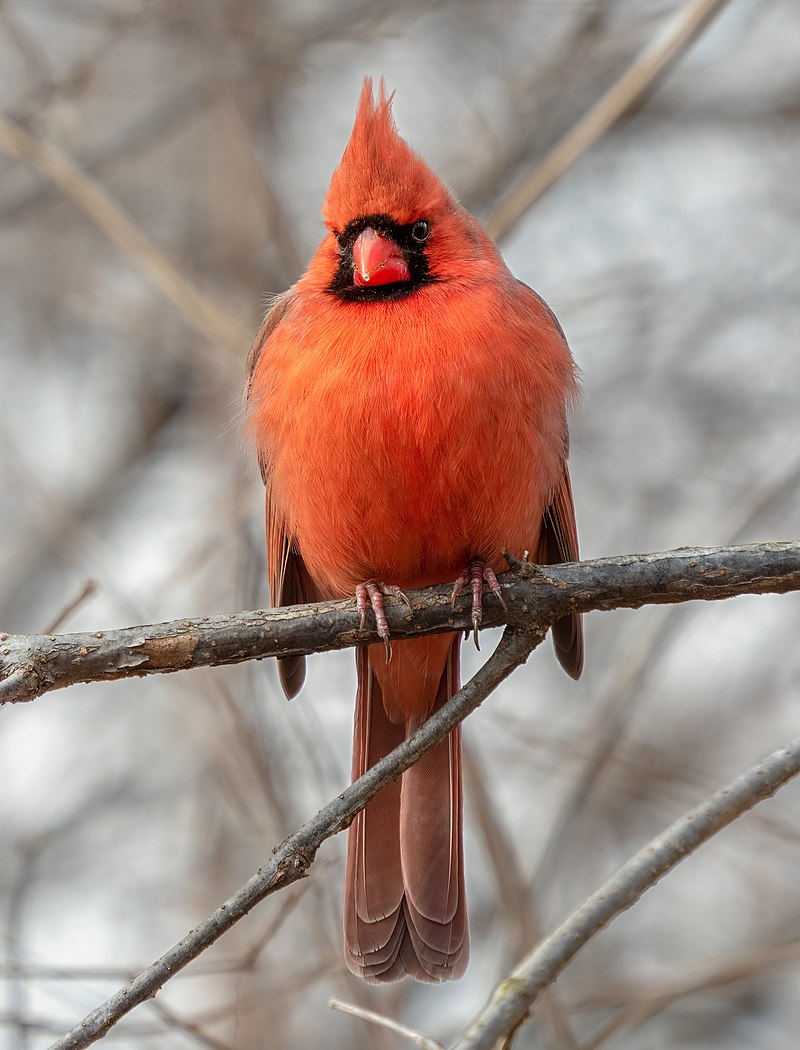
The Northern Cardinal is a beautiful bird, easily identified by its bright red plumage. It can be found in the eastern United States from Maine to Minnesota and south through Mexico and Belize.
Along with its striking colouration, it has a distinctive crest on its head and sharp black facial markings around the eyes.
Despite their small size (measuring 7-9 inches) they are very vocal birds – males sing persistently throughout springtime to attract mates or proclaim their territory.
They typically feed on insects, seeds and fruits but also enjoy suet at backyard bird feeders.
The female is less brightly coloured than her mate but still stands out among other songbirds due to her warm brownish-red feathers.
Cardinals pair for life so you may often see them together in your garden or neighbourhood park.Scientific classification:
| Kingdom | Animalia |
| Phylum | Chordata |
| Class | Aves |
| Order | Passeriformes |
| Family | Cardinalidae |
| Genus | Cardinalis |
| Species | C. cardinalis |
Also Featured In: Most Common United States Birds, Birds for Your Home Garden
2. American Robin

The American robin is a migratory bird, belonging to the true thrush genus and Turdidae family.
It was named after its European counterpart due to the similar reddish-orange breast they both possess; however, they are not related closely.
This species can be seen through most of North America during winter months, as well as in parts of Mexico and Central America where it also breeds.
They have plump bodies with gray upperparts and white underparts that vary from yellow on their throats down to orange toward their bellies.
Robins feed on fruits such as berries or insects like worms which makes them an important part of ecosystems by helping disperse seeds naturally throughout these areas.Scientific classification:
| Kingdom | Animalia |
| Phylum | Chordata |
| Class | Aves |
| Order | Passeriformes |
| Family | Turdidae |
| Genus | Turdus |
| Species | T. migratorius |
Also Featured In: Most Common Songs Birds that Live around You, Flocks Birds around Us
3. Northern Mockingbird
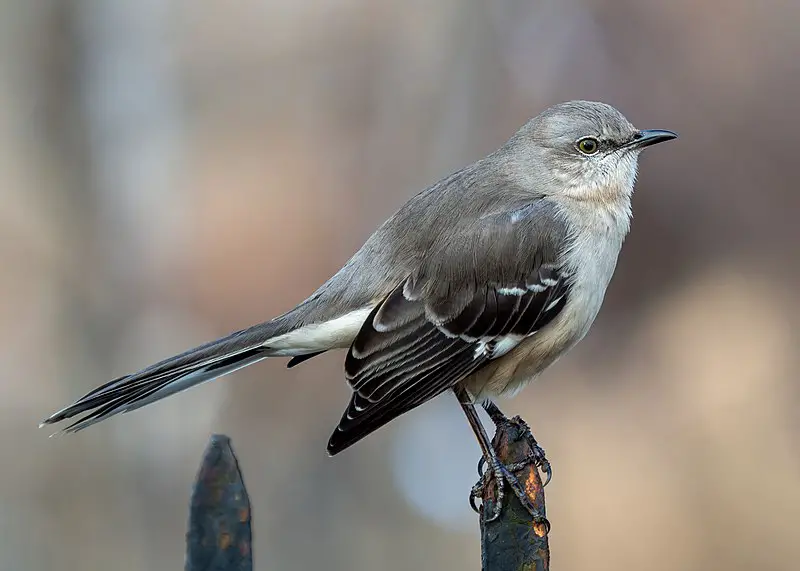
The northern mockingbird is a common fixture in North American skies. It has greyish-brown upperparts and a paler underside with white wing patches, and its distinctive long tail makes it easy to spot.
This adaptable bird can often be seen singing from the tops of trees or fences, though it rarely strays into Europe.
The species was first described by Carl Linnaeus in his 1758 Systema Naturae as Turdus polyglottos – aptly named for their remarkable ability to mimic other birds’ songs.
Northern mockingbirds typically live on insects, fruits, berries and seeds but they will also happily scavenge food scraps left out by humans.
With its beautiful song and striking plumage this beloved avian makes an important contribution to our environment.Scientific classification:
| Kingdom | Animalia |
| Phylum | Chordata |
| Class | Aves |
| Order | Passeriformes |
| Family | Mimidae |
| Genus | Mimus |
| Species | M. polyglottos |
Also Featured In: Birds Live Near San Diego, Birds Live in Arkansas
4. American Goldfinch
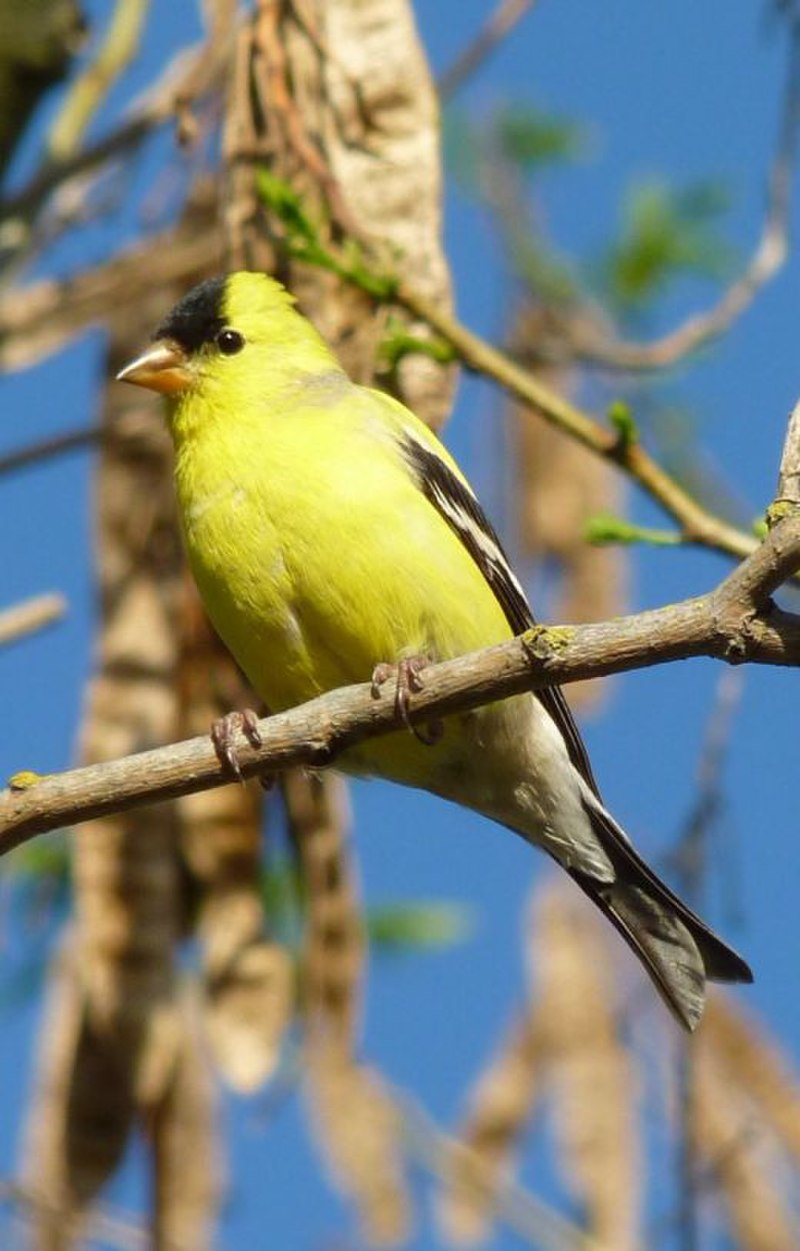
The American goldfinch is a small North American bird in the finch family. Males are vibrant yellow with black wings and tail, while females are duller in colouration.
It migrates from mid-Alberta to North Carolina during breeding season, south of Canada–United States border to Mexico for its wintering grounds.
The only finch which undergoes complete molt every year, it displays sexual dichromatism where males have brighter colours than their female counterparts.
They feed mainly on seeds but also eat insects such as aphids and caterpillars when raising youngs; they often occur near thistles or other plants that produce viable seed heads.
Their call consists of an array of chirps and trills making them quite conspicuous.Scientific classification:
| Kingdom | Animalia |
| Phylum | Chordata |
| Class | Aves |
| Order | Passeriformes |
| Family | Fringillidae |
| Subfamily | Carduelinae |
| Genus | Spinus |
| Species | S. tristis |
Also Featured In: Blue Birds You’ll Found around Us, Common Southern Californian Birds
5. Songbirds
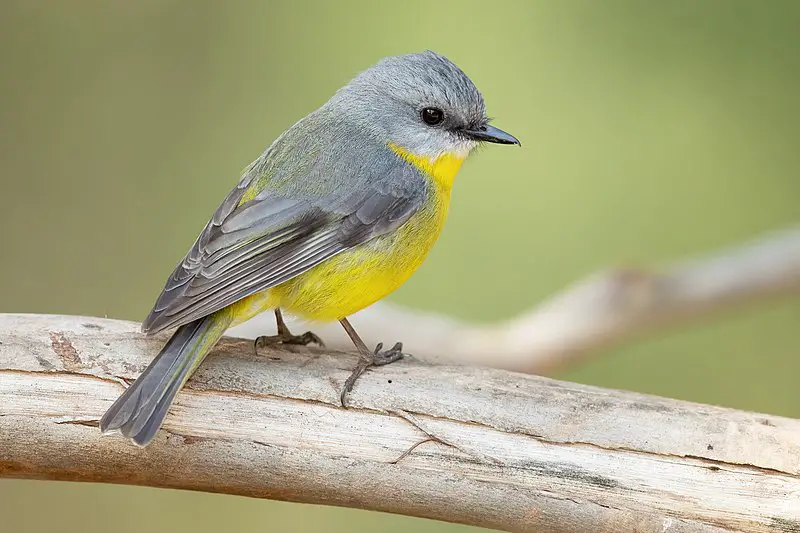
Songbirds are a special suborder of perching birds found all over the world. These beautiful creatures have intricate vocal organs that allow them to produce elaborate bird songs, making them stand out from other species.
With around 5,000 different types of songbird in existence, they come in various sizes and colors with complex feathers adding to their beauty.
Songbirds play an important role in eco-systems as they help disperse seeds by eating fruit and insects which act as agents for pollination.
Their presence also serves to attract more biodiversity into areas where these delicate animals live, creating vibrant habitats full of life.Scientific classification:
| Kingdom | Animalia |
| Phylum | Chordata |
| Class | Aves |
| Order | Passeriformes |
| Clade | Eupasseres |
| Suborder | Passeri Linnaeus, 1758 |
Also Featured In: Common Birds in the Cities, Summer Birds that Live around Us
6. Bluebirds
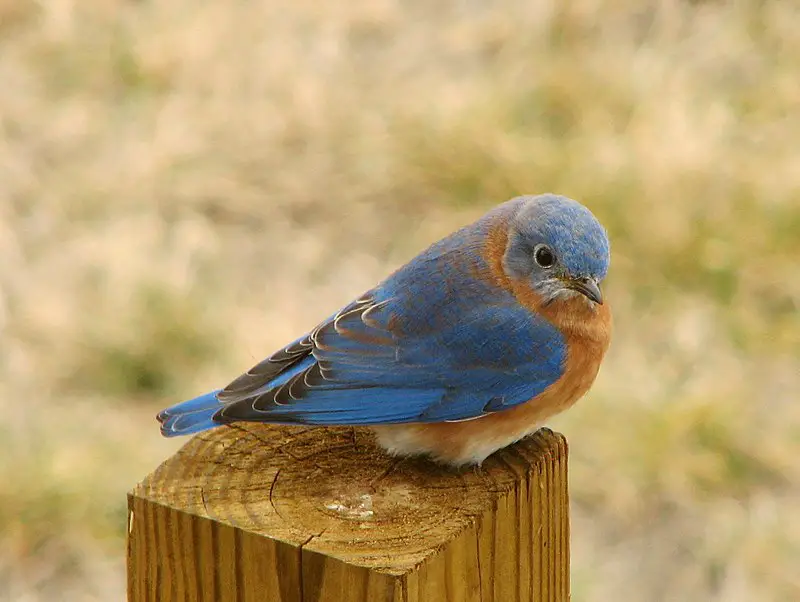
Bluebirds are a North American species of small to medium-sized birds belonging to the thrush family. They have stunning blue and rose beige plumage, with males having brighter colors than females.
These beautiful birds mainly feed on insects, but they can also eat some fruits or seeds from time to time. Bluebirds reside in open fields, meadows and backyards across much of North America.
Their cheerful songs bring joy as they fly through their habitats looking for food during the day before returning home at nightfall.
The sight of these beautiful creatures is often associated with happiness and hope – making them beloved by many people.Scientific classification:
| Kingdom | Animalia |
| Phylum | Chordata |
| Class | Aves |
| Order | Passeriformes |
| Family | Turdidae |
| Subfamily | Myadestinae |
| Genus | Sialia Swainson, 1827 |
Also Featured In: House Birds You’ll Love to Pet, Birds of Symbolism
7. Black-Capped Chickadee
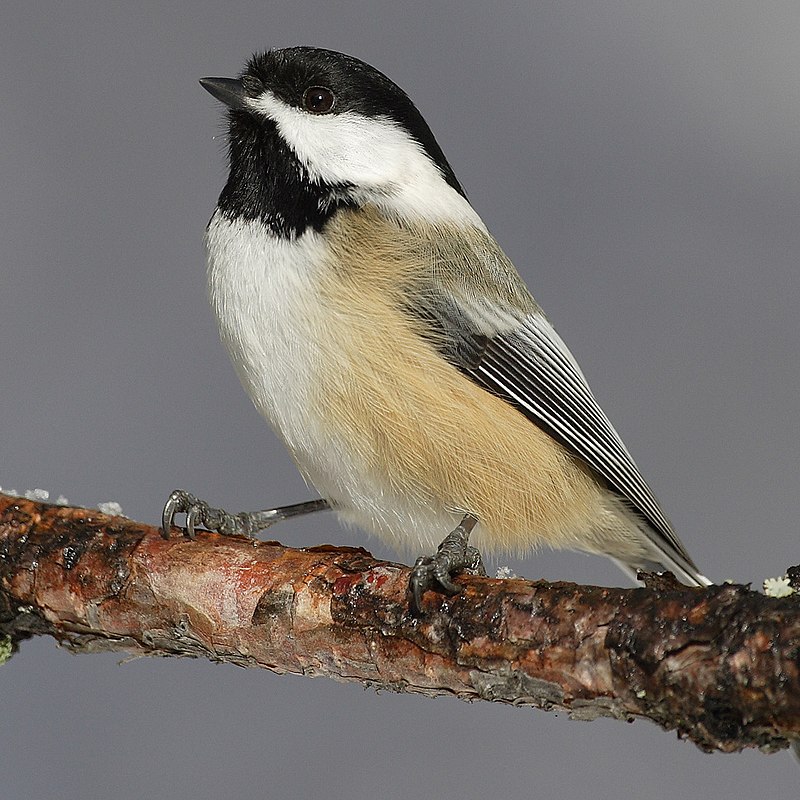
The black-capped chickadee is a small and cheerful songbird found in deciduous and mixed forests across North America. It has an iconic black cap, white cheeks, gray back and wings with whitish bars on them.
The underparts are usually light colored or greyish brown. This species is well adapted to cold winters as it can reduce its body temperature by up to 8°C while roosting at night; this helps save energy during the colder months of the year.
It feeds mainly on insects but also eats seeds, fruits and suet from bird feeders when available.
Black-capped chickadees are popular birds among backyard visitors due to their sociable nature – they often establish lifelong partnerships with one another for breeding purposes.
Furthermore, they have been designated as state birds of Massachusetts and Maine in USA plus New Brunswick in Canada – a testament to how beloved these little avian friends truly are.Scientific classification:
| Kingdom | Animalia |
| Phylum | Chordata |
| Class | Aves |
| Order | Passeriformes |
| Family | Paridae |
| Genus | Poecile |
| Species | P. atricapillus |
Also Featured In: British Columbian Birds, Black And White Birds You Don’t Know About
8. Wrens
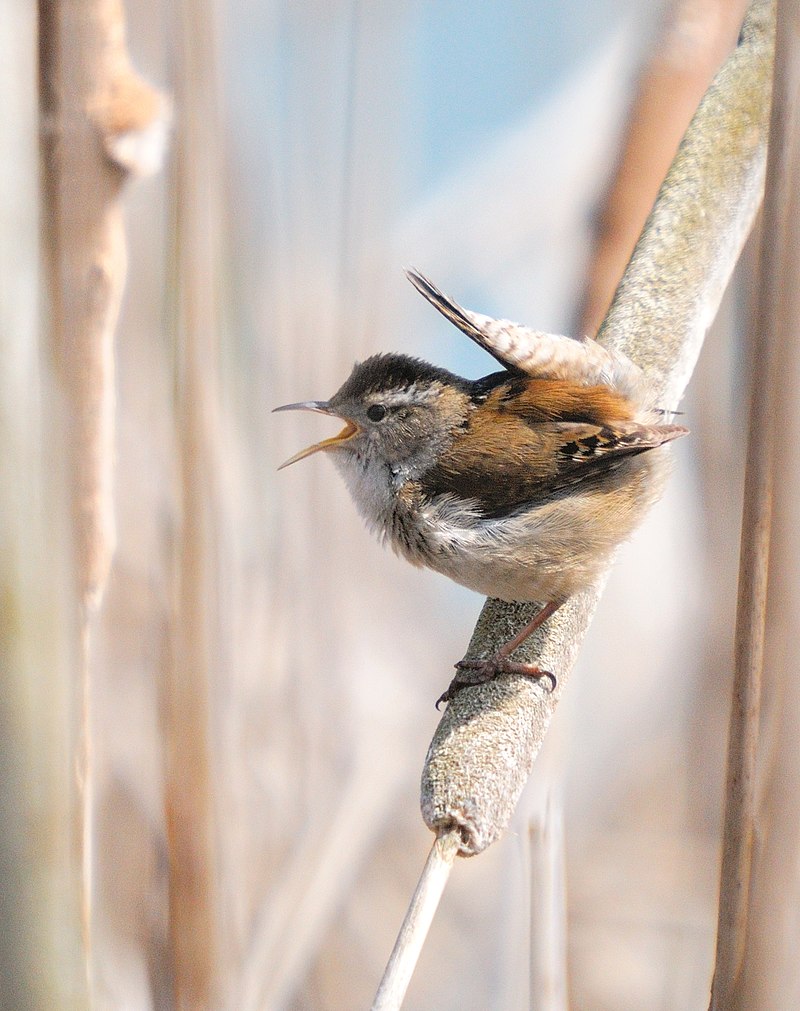
Wrens are a family of small brown passerine birds found mainly in the Americas. They are considered one of the most abundant bird species, with 88 known varieties divided into 19 genera.
The Eurasian wren is the only type that inhabits Europe and other parts of the Old World, where it’s commonly referred to simply as “wren.”
This species has been given its name due to similar-looking unrelated birds living elsewhere such as New Zealand wrasses.
Wrens have tiny bodies with thin bills and long tails which they often hold upright for hours at a time while singing their loud cheery songs from treetops or low shrubs.
Their diet consists mostly of insects but can also include fruits and seeds depending on availability in their habitat range.Scientific classification:
| Kingdom | Animalia |
| Phylum | Chordata |
| Class | Aves |
| Order | Passeriformes |
| Superfamily | Certhioidea |
| Family | Troglodytidae Swainson, 1832 |
Also Featured In: Common Denmark Birds, Most Common Scotland Birds
9. Eastern Bluebird
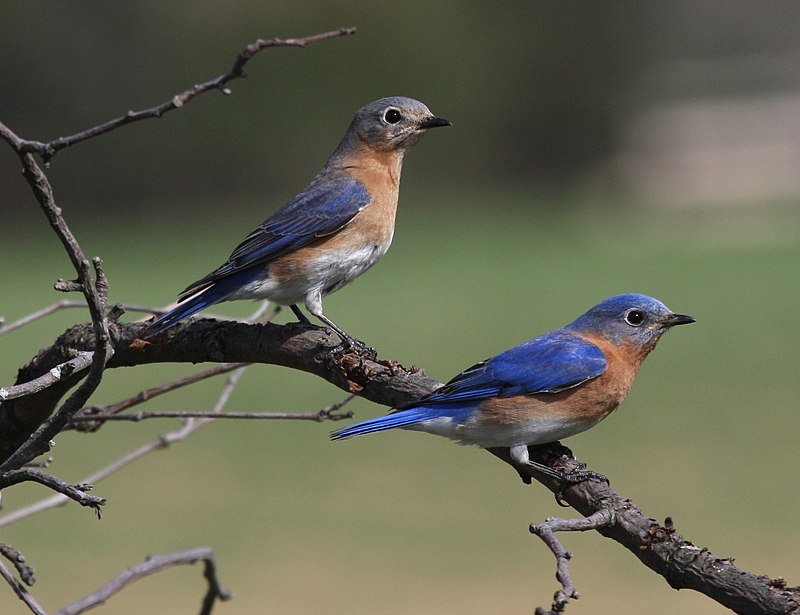
The Eastern bluebird is a small migratory thrush that can be found in open woodlands, farms and orchards across North America.
The male has bright-blue breeding plumage which makes it easily recognizable by birders.
It produces melodious songs such as jeew, chir-wi and chiti WEEW wewidoo.
This popular species was declared the state bird of Missouri back in 1927 due to its beauty and charm.
In addition to being beautiful, these birds are also beneficial for farmers because they eat insects like grasshoppers and beetles which damage crops.
They nest in cavities so providing nesting boxes helps them thrive even more.
With their vibrant colors, sweet melodies and helpful nature it’s easy to see why the Eastern Bluebird is beloved worldwide.Scientific classification:
| Kingdom | Animalia |
| Phylum | Chordata |
| Class | Aves |
| Order | Passeriformes |
| Family | Turdidae |
| Genus | Sialia |
| Species | S. sialis |
Also Featured In: Birds that Migrate through Illinois in the Spring, Birds in Iowa Spring
10. Blue Jay
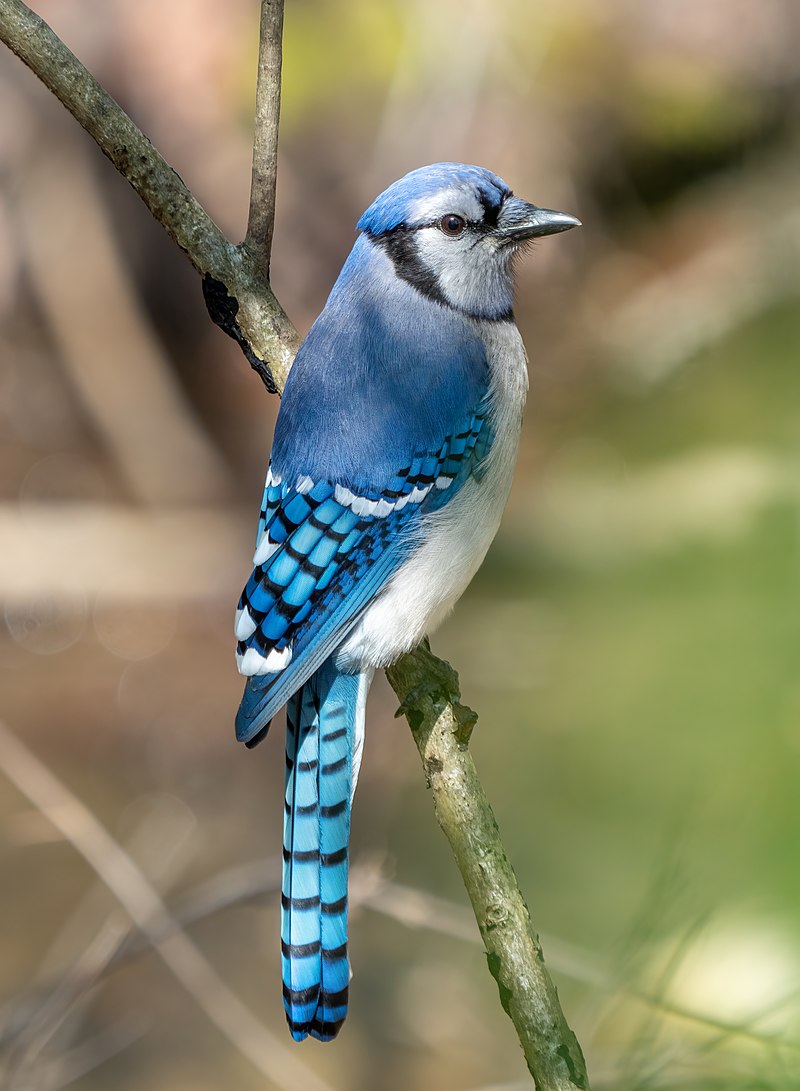
The Blue Jay is a beautiful bird that resides in eastern and central United States, as well as Newfoundland Canada.
They have an unmistakable blue colored plumage with white markings on their heads and wings.
These birds are highly adaptable to different habitats ranging from deciduous forests to urban areas.
As part of the Corvidae family, they are known for being intelligent problem solvers who will often use tools or mimic vocalizations of other species like hawks when defending their territories.
Their diet consists mostly of insects, seeds and nuts but can also include small vertebrates such as frogs or lizards if food resources become scarce.
Overall these birds provide much needed color to our environment while playing important roles in maintaining healthy ecosystems through pollination services and seed dispersal activities.Scientific classification:
| Kingdom | Animalia |
| Phylum | Chordata |
| Class | Aves |
| Order | Passeriformes |
| Family | Corvidae |
| Genus | Cyanocitta |
| Species | C. cristata |
Also Featured In: Most Common Nature Birds, Birds of Nova Scotia
11. Downy Woodpecker
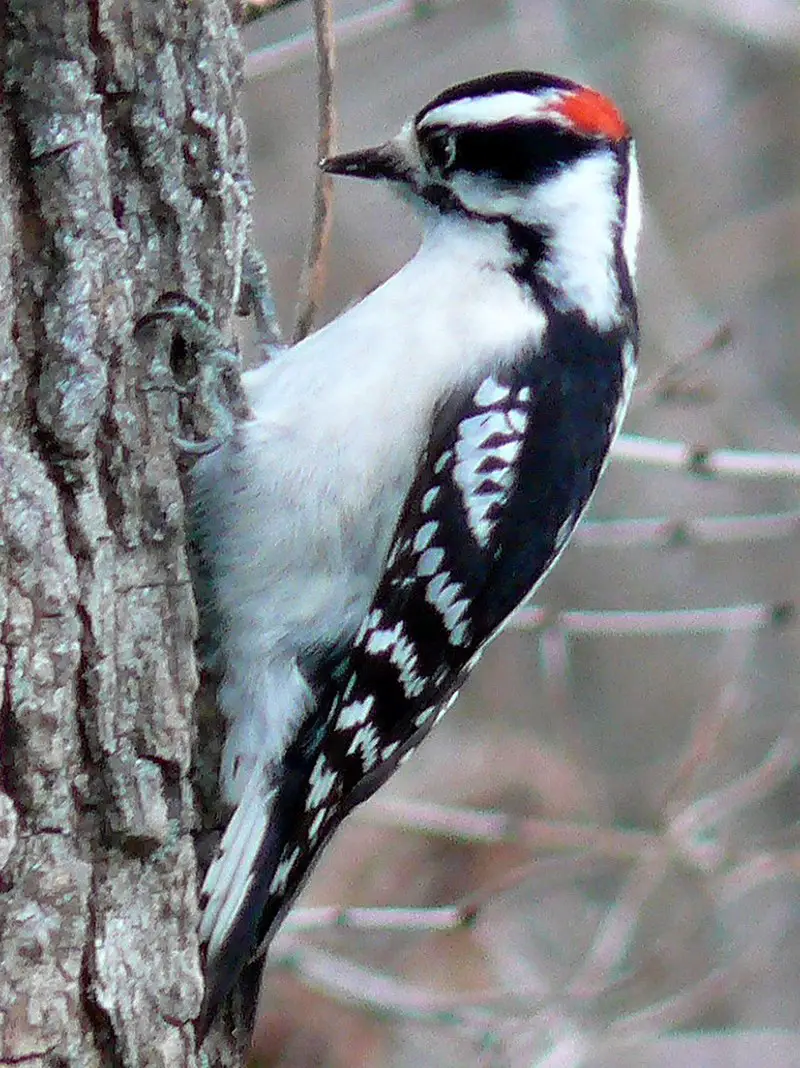
The downy woodpecker is a small species of woodpecker found in North America. Growing up to 7 inches long, it can be identified by its white belly and spotted wings.
It inhabits forests throughout the United States and Canada, with the exception of deserts in the southwest and northern tundra.
This bird nests in tree cavities and feeds mostly on insects but will supplement its diet with fruit or nuts when available.
The Downy Woodpecker has an unmistakable call that sounds like a loud ‘pik-er’, similar to other members of its family such as the Hairy Woodpecker.Scientific classification:
| Kingdom | Animalia |
| Phylum | Chordata |
| Class | Aves |
| Order | Piciformes |
| Family | Picidae |
| Genus | Dryobates |
| Species | D. pubescens |
Also Featured In: Long Island Birds You Should Know, Birds in Calgary You’ll Love to See
12. House Sparrow
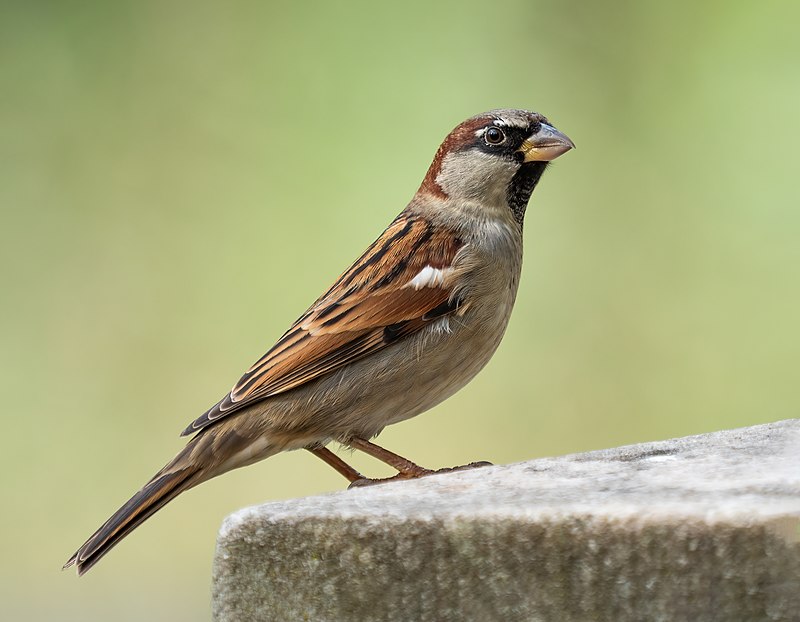
The house sparrow is a small bird of the Passeridae family. It has an average length of 16 cm and weighs 24-39.5 gm.
Females have dull brown and grey plumage, whereas males are brighter, with black, white and brown markings on their wings and back feathers.
This species is one among 25 different kinds in its genus Passer .These birds are found all around the world mainly near human dwellings where they feed off food scraps from garbage bins or gardens etc..
They also make nests close to houses which makes them even more visible to people living nearby.
House sparrows can be seen hopping around yards looking for food during daytime hours but usually hide in colonies at night time.Scientific classification:
| Kingdom | Animalia |
| Phylum | Chordata |
| Class | Aves |
| Order | Passeriformes |
| Family | Passeridae |
| Genus | Passer |
| Species | P. domesticus |
Also Featured In: Ukrainian Birds You Should Know, Asian Birds
13. Red-Bellied Woodpecker
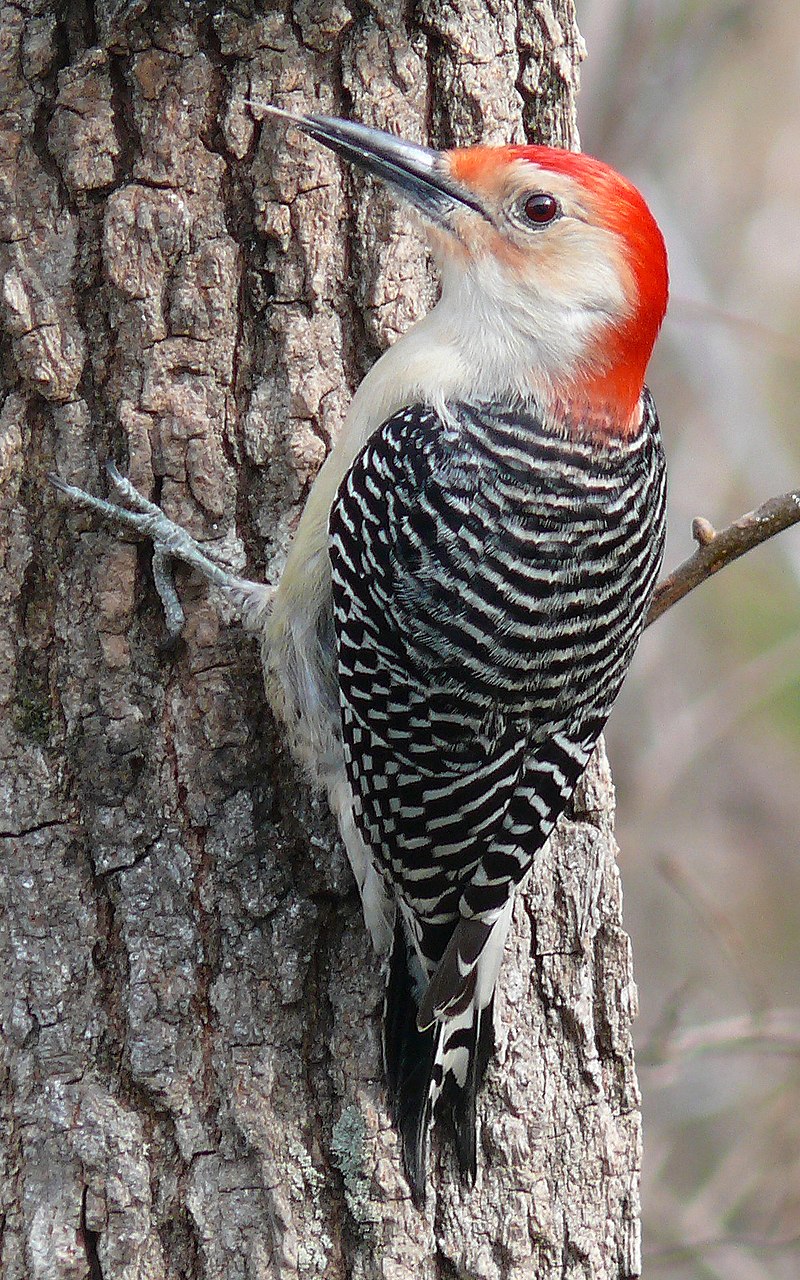
The Red-bellied woodpecker is a beautiful bird with an orange-red crown and nape. It breeds mainly in the eastern United States, ranging from Florida to Canada.
This medium-sized woodpecker of the family Picidae has black wings, white stripes on its back and tail feathers that are barred with black.
Its underside is mostly pale yellow or white but it also features some red coloration around its neck area.
Despite this subtle red hue, it should not be mistaken for the entirely red head and neck belonging to the Red-headed woodpecker of the same genus Melanerpes carolinus.
The Red bellied Woodpeckers diet consists primarily of insects such as ants, beetles and grasshoppers along with nuts fruits berries and tree sap which they will feed upon during different times throughout their life cycle.Scientific classification:
| Kingdom | Animalia |
| Phylum | Chordata |
| Class | Aves |
| Order | Piciformes |
| Family | Picidae |
| Genus | Melanerpes |
| Species | M. carolinus |
Also Featured In: Common Central Park Birds, Common Birds of Houston
14. House Finch

The House Finch is a species of finch native to western North America and has been introduced in the eastern half of the continent as well as Hawaii.
It’s an average-sized finch with adults measuring 12.5 – 15 cm (5 – 6 inches) long and having wingspans between 20 – 25 cm (8 – 10 inches).
The upperparts are brown, while its underparts range from pale grayish white to yellow depending on subspecies.
Its face is streaked or spotted with reddish coloration; males typically have brighter plumage than females due to sexual dimorphism.
They’re mostly found near human habitations such as farms and gardens where they feed on grains, fruits, insects etc., making them very popular among birders who want something colorful for their backyard.Scientific classification:
| Kingdom | Animalia |
| Phylum | Chordata |
| Class | Aves |
| Order | Passeriformes |
| Family | Fringillidae |
| Subfamily | Carduelinae |
| Genus | Haemorhous |
| Species | H. mexicanus |
Also Featured In: Common Birds That Live in Las Vegas, Birds That Live around Seattle
15. Dark-Eyed Junco

The Dark-eyed Junco is a species of small, grayish sparrows that are found across much of temperate North America and in the Arctic during summer.
It was formally described by Carl Linnaeus in 1766, who named it after its distinctive dark eyes.
This bird has a very variable appearance due to the many different subspecies it contains, making its systematics difficult to unravel.
The plumage varies from white or light gray on their underparts with slate grey backs and wings; black heads with white outer tail feathers; brown head stripes; yellow bills; pink legs and feet; as well as various shades between all these colours.
They also have considerable sexual dimorphism where males tend to be more colourful than females but share similar characteristics such as short tails and rounded bodies – both sexes being around 16 cm long when fully grown.Scientific classification:
| Kingdom | Animalia |
| Phylum | Chordata |
| Class | Aves |
| Order | Passeriformes |
| Family | Passerellidae |
| Genus | Junco |
| Species | J. hyemalis |
Also Featured In: Birds that Live in San Francisco Bay Area, Lake Tahoe Birds
16. Common Starling

The Common Starling is a medium-sized passerine bird that belongs to the starling family. It has glossy black plumage with a metallic sheen, and in certain times of year it can be speckled with white.
The bill and legs are typically pink or black depending on the season, while its length measures about 8 inches long.
Its diet consists mainly of insects but also includes small fruits and seeds as well as some human food waste.
They live in large flocks which provides protection against predators, although they can become quite aggressive when defending their nesting sites during breeding seasons.
Overall, this species is highly adaptable and widely distributed across many parts of Europe making them one of the most successful birds in the region today.Scientific classification:
| Kingdom | Animalia |
| Phylum | Chordata |
| Class | Aves |
| Order | Passeriformes |
| Family | Sturnidae |
| Genus | Sturnus |
| Species | S. vulgaris |
Also Featured In: European Birds, Common Species of Birds
17. Mourning Dove
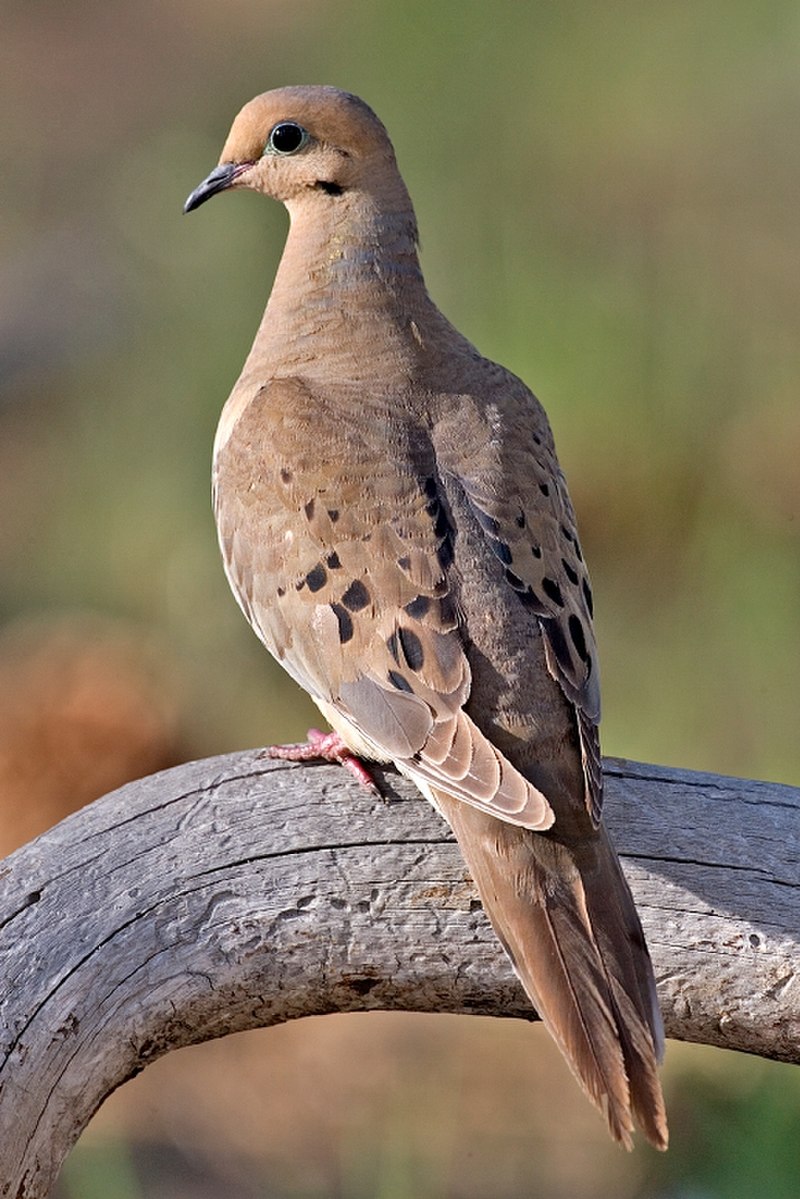
The Mourning Dove is a breathtakingly beautiful bird. It has stunning gray and brown feathers with white tipped wings, giving it an elegant appearance. Its long tail also adds to its graceful look in flight.
A symbol of peace and serenity, they are abundant across North America and can be found in gardens or open fields throughout the year.
As well as being popular game birds for hunters, they feed on grains such as wheat and millet providing important food sources for wildlife species including foxes, coyotes, skunks and raccoons.
These doves have a distinctive cooing sound that can often be heard echoing through woodlands during summer evenings making them one of nature’s greatest treasures.Scientific classification:
| Kingdom | Animalia |
| Phylum | Chordata |
| Class | Aves |
| Order | Columbiformes |
| Family | Columbidae |
| Genus | Zenaida |
| Species | Z. macroura |
Also Featured In: Small Kentucky Birds, Brown Birds that Live in West Virginia
18. Tufted Titmouse
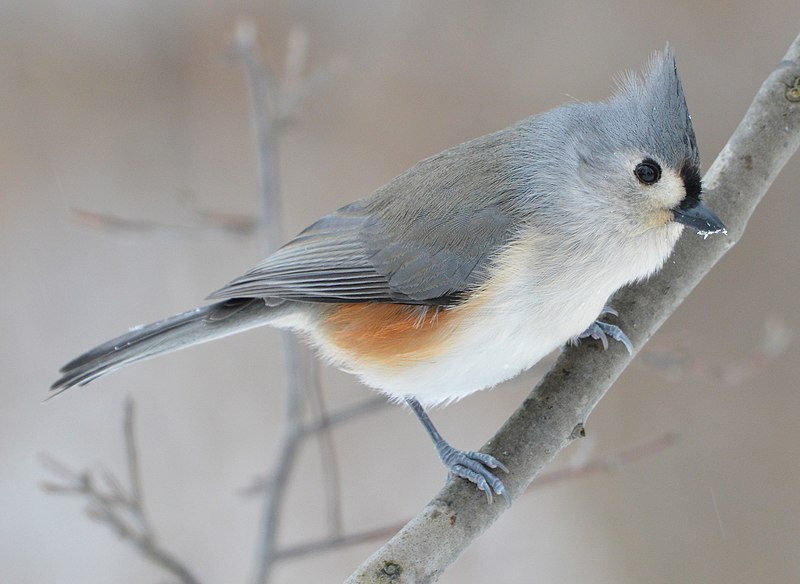
The Tufted Titmouse is a small, cheerful songbird found in North America. It’s part of the tit and chickadee family (Paridae).
It has distinctive white feathers around its eyes, grey-brown wings and upper body, with a pale tan underside.
Its most notable feature is the black crest on top of its head that gives it an inquisitive look. The male also sports a pinkish breast which can be seen.
When singing from high perches during the spring months. This bird loves to eat sunflower seeds or suet at backyard feeders as well as insects in summertime.
You may even see them poking into crevices and bark looking for food.
They are quite social birds too, being often spotted in mixed flocks alongside other species such as nuthatches and woodpeckers all year round.Scientific classification:
| Kingdom | Animalia |
| Phylum | Chordata |
| Class | Aves |
| Order | Passeriformes |
| Family | Paridae |
| Genus | Baeolophus |
| Species | B. bicolor |
Also Featured In: Birds that Calls in the Morning, Small Birds that Live in Washington D.C.
19. White-Breasted Nuthatch
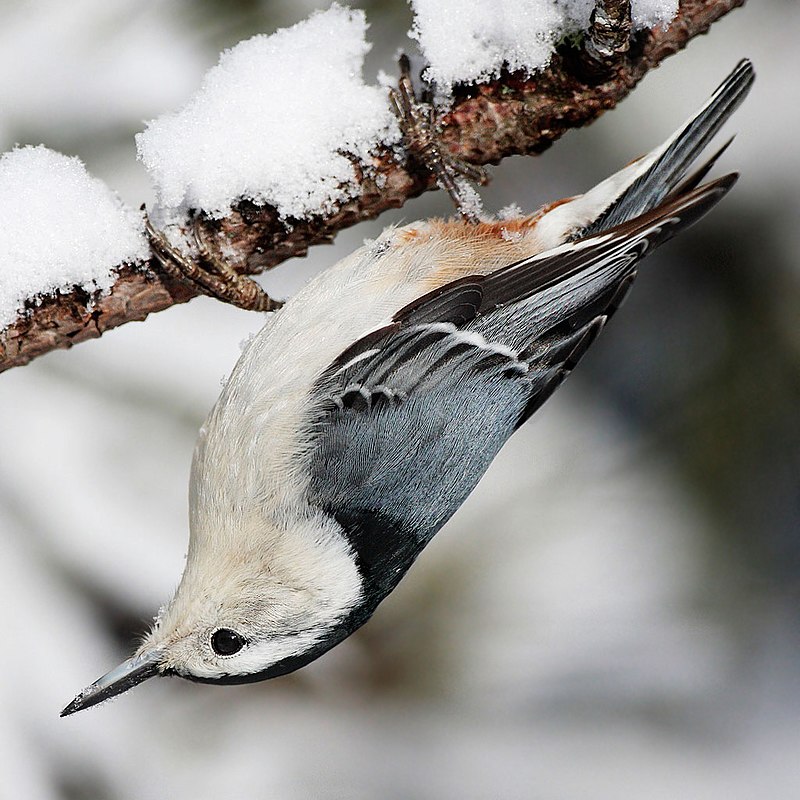
The White-breasted Nuthatch is a medium-sized bird belonging to the nuthatch family Sittidae. It measures around 15.5 cm in length and its colour varies throughout its range.
Males have a light blue-grey upperpart, with black crown and nape whereas females have a dark grey crown instead of black one.
The underparts are whitish, with reddish tinge on sides and flanks while the bill is short and stout with pale base near eyes which can be yellow or white depending upon geographic location..
This species feeds mainly on insects but will also eat seeds, nuts and berries when available.
They prefer open woodlands where they often climb trees searching for food along trunks as well as branches underneath bark crevices creating their nest there too.Scientific classification:
| Kingdom | Animalia |
| Phylum | Chordata |
| Class | Aves |
| Order | Passeriformes |
| Family | Sittidae |
| Genus | Sitta |
| Species | S. carolinensis |
Also Featured In: Birds Commonly Found in Northern California, Large Birds Live in Idaho
20. Anna’s Hummingbird
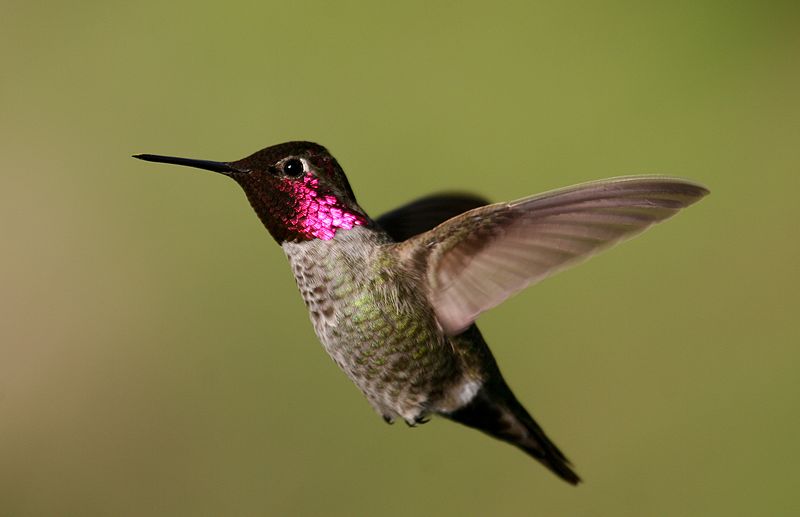
Anna’s hummingbird is a beautiful species of bird belonging to the Trochilidae family. Native to western coastal regions of North America, it was named after Anna Masséna, Duchess of Rivoli.
In the early 20th century, these birds bred only in northern Baja California and southern California but due to ornamental plant transplanting they can now be found across much of Pacific Coast region.
They are medium-sized with bright emerald green feathers on their back and crowns as well as rose-red patches at the throat for males which makes them quite distinguishable from other birds.
Their diet consists mainly nectar from flowers although they will occasionally feed on insects or spiders too making them important pollinators that help maintain healthy ecosystems.Scientific classification:
| Kingdom | Animalia |
| Phylum | Chordata |
| Class | Aves |
| Order | Apodiformes |
| Family | Trochilidae |
| Genus | Calypte |
| Species | C. anna |
Also Featured In: Flight Birds You Should Know, Orange County Birds You Need to See
21. Hummingbirds
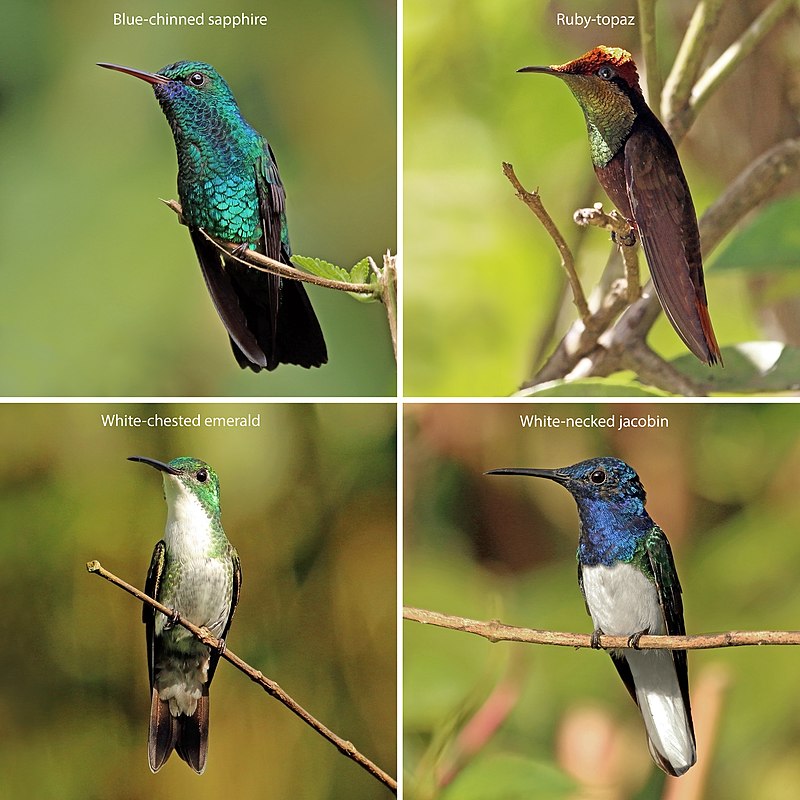
Hummingbirds are tiny birds found throughout the Americas, from Alaska to Tierra del Fuego. Most species measure between 3-5 inches in length and weigh less than an ounce.
The smallest hummingbird is only 2 inches long. Hummingbirds have a unique ability of hovering by rapidly flapping their wings up to 80 times per second.
They feed on nectar and insects, with some species even able to drink sap or eat pollen directly off flowers.
Their vibrant colors make them instantly recognizable as they dart through gardens in search of food and mates.
Hummingbirds truly bring joy into our lives as they remind us that nature’s beauty can be seen around every corner if we take the time to look for it.Scientific classification:
| Kingdom | Animalia |
| Phylum | Chordata |
| Class | Aves |
| Order | Apodiformes |
| Family | Trochilidae Vigors, 1825 |
Also Featured In: Birds that Live in the Deserts, Rainforest Birds You Should Know
22. Carolina Wren
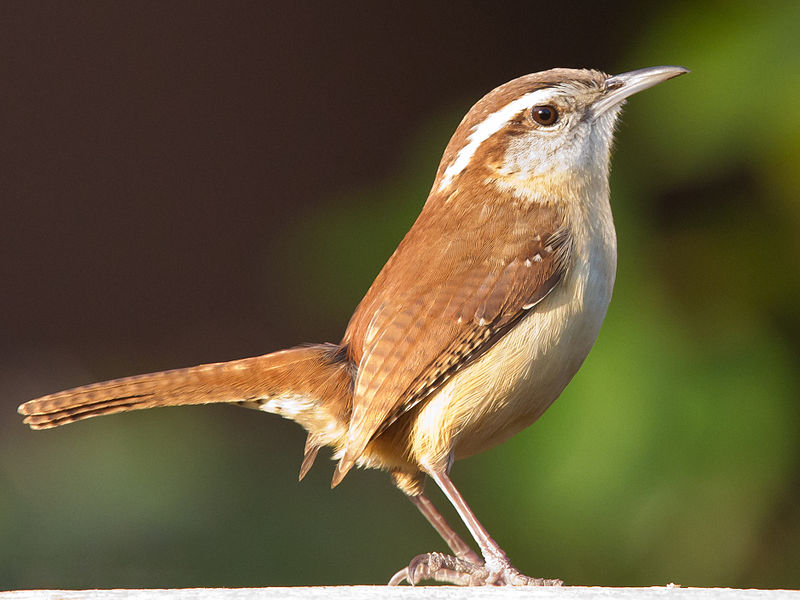
The Carolina wren (Thryothorus ludovicianus) is a medium-sized bird that can be found in the eastern United States, southern Ontario and northeast Mexico.
They typically live in dense shrubbery or thickets near open areas such as gardens, parks and woodland edges.
These birds are quite adaptable when it comes to nesting sites – they will build their nests anywhere from tree cavities to manmade boxes.
Their diet consists of insects, spiders and other invertebrates which they forage for on the ground or among vegetation.
The males have an unmistakable song made up of loud whistles interspersed with trills reminiscent of laughter; you’ll often find these cheerful little birds singing away during early morning hours.Scientific classification:
| Kingdom | Animalia |
| Phylum | Chordata |
| Class | Aves |
| Order | Passeriformes |
| Family | Troglodytidae |
| Genus | Thryothorus Vieillot, 1816[2] |
| Species | T. ludovicianus |
Also Featured In: Birds that can be Seen in Outer Banks, Brown Birds that are Found in Mississippi
23. Yellow-Rumped Warbler
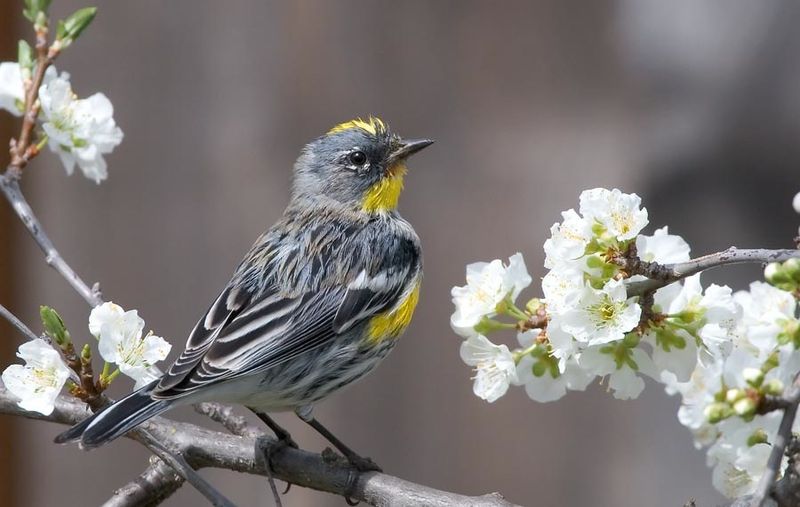
The Yellow-rumped Warbler (Setophaga coronata) is a migratory bird species that can be found throughout North America.
It has an extensive range, from the Pacific and Atlantic coats of the US to Canada and Central America, with a concentration in northern areas during breeding season.
These birds migrate southwards for wintering grounds where they find plentiful food sources such as insects and berries.
They are easily identified by their yellow patches on either side of their tails, along with white underparts, gray back feathers and two distinct crown stripes.
One black or greyish-brown above the eyes extending towards its neck banded in yellow or light brown colouration.
Furthermore, these warblers have strong legs which allow them to cling onto branches while hunting for prey making them adept at maneuvering through tree cover quickly.
All together this makes the Yellow-rumped Warbler an attractive backyard visitor year round.Scientific classification:
| Kingdom | Animalia |
| Phylum | Chordata |
| Class | Aves |
| Order | Passeriformes |
| Family | Parulidae |
| Genus | Setophaga |
| Species | S. coronata |
Also Featured In: Most Popular Bird Species in North America, Birds that Found in the Yellowstone
24. Finches
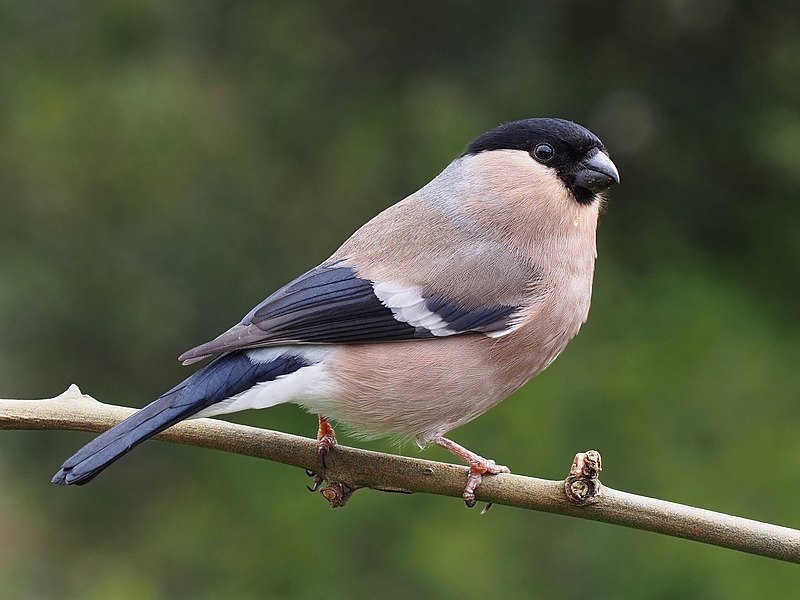
Finches are a diverse group of passerine birds found around the world, excluding Australia and polar regions. They vary in size from small to medium-sized, with stout conical bills adapted for eating seeds and nuts.
Many species have brightly coloured plumage; this helps them stand out against their natural habitats which can range from deserts to forests.
Finches occupy these areas all year round without migrating elsewhere – making them particularly well suited for local environments.
As part of the Fringillidae family they possess unique characteristics that make them popular amongst birdwatchers everywhere.Scientific classification:
| Kingdom | Animalia |
| Phylum | Chordata |
| Class | Aves |
| Order | Passeriformes |
| Superfamily | Passeroidea |
| Family | Fringillidae Leach, 1820 |
Also Featured In: Native Pakistani Birds, Aviary Birds You Should Know
25. Woodpeckers
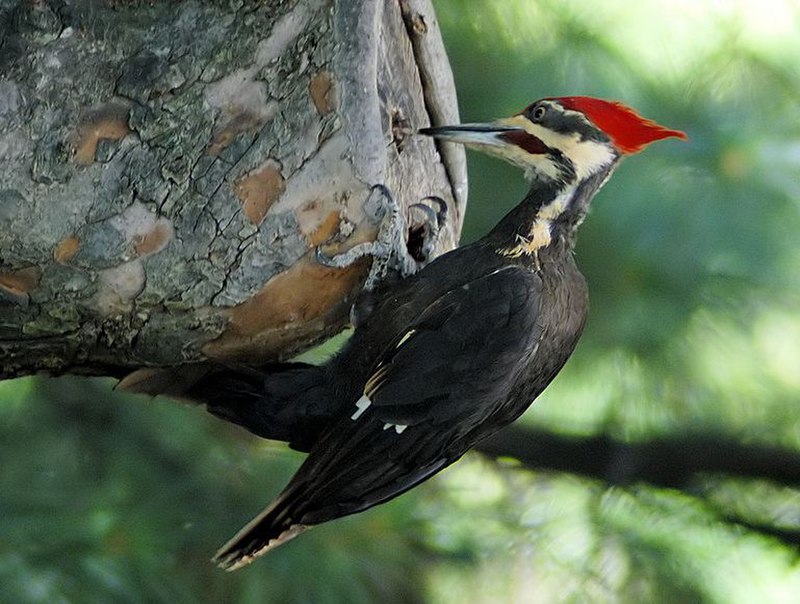
Woodpeckers are an incredibly diverse bird species, found all over the world except for Australia, New Guinea, New Zealand, Madagascar and the extreme polar regions.
They live in a variety of habitats including forests and woodlands but also rocky hillsides and deserts with no trees.
Their beaks are adapted to pecking at tree bark to find food such as insects or larvae hidden beneath it while they use their long tongues to catch them from deep inside crevices.
Woodpeckers have tough skulls that protect their brains from impact when they bang into things during drumming – a behaviour used by males for territorial signalling and reproduction purposes which is done using strong rapid beats against hollow objects like dead branches or metal poles.Scientific classification:
| Kingdom | Animalia |
| Phylum | Chordata |
| Class | Aves |
| Order | Piciformes |
| Infraorder | Picides |
| Family | Picidae Leach, 1820 |
Also Featured In: Most Common Types of Bangladeshi Birds, Common Serbian Birds
26. Crow Family
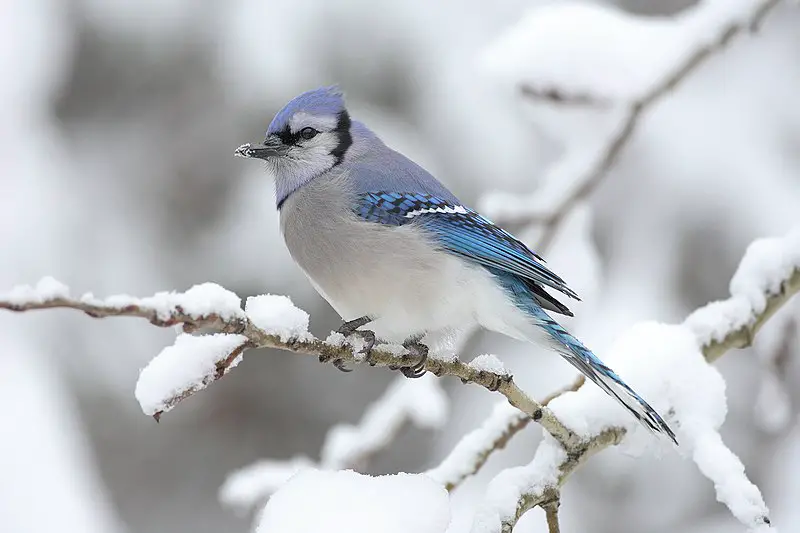
The Crow family is a cosmopolitan group of birds that contains crows, ravens, rooks, jackdaws, jays, magpies and more.
Altogether there are 133 members in this bird family which all share similar characteristics such as large beaks and feet.
The genus Corvus alone makes up over a third of the entire crow family population with species like the common crow or blackbird being some of its most recognizable members.
All these birds have strong social bonds so they often travel in groups to find food sources or build nests together for protection against predators.
With their intelligence and adaptation skills they are able to survive almost anywhere on Earth from mountains to cities making them one of the world’s most successful families of avian creaturesScientific classification:
| Kingdom | Animalia |
| Phylum | Chordata |
| Class | Aves |
| Order | Passeriformes |
| Superfamily | Corvoidea |
| Family | Corvidae Leach, 1820 |
Also Featured In: Common Birds in Japan, Turkey Birds You Should Know
27. Passerine
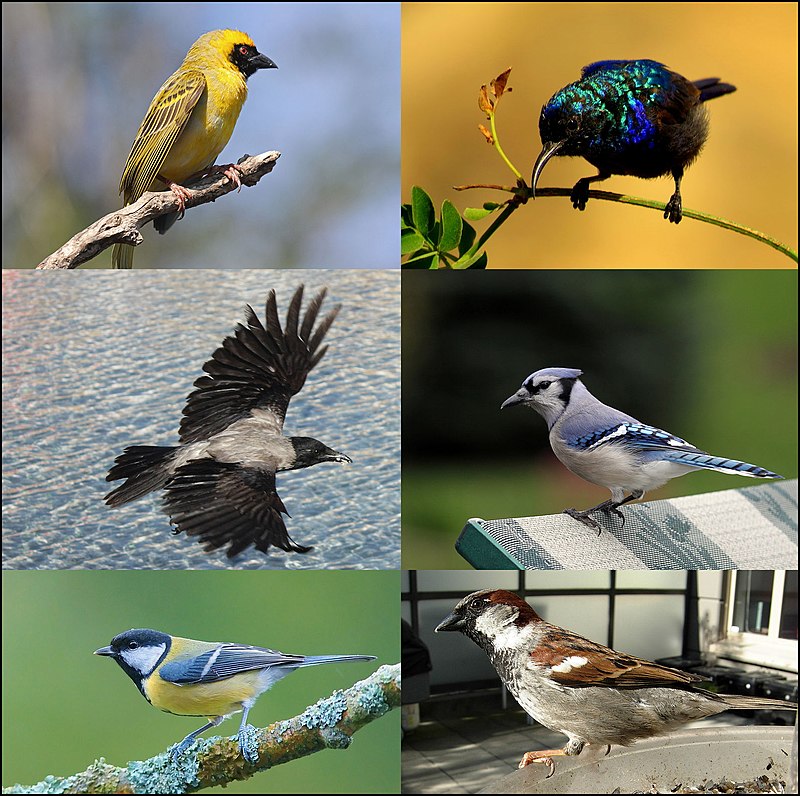
Passerines are a vast order of birds, comprising more than half the species in existence. Many familiar garden and woodland species fall into this category such as sparrows, blackbirds, finches and warblers.
They can be recognised by their arrangement of toes; three pointing forward with one back which helps them perch on branches or wires.
Passerines range from tiny wrens to large crows and have adapted to inhabit many environments around the world including forests, mountainsides and deserts.
They feed mainly on insects but some also consume fruit and seeds depending on their diet preferences.
Their diversity is truly remarkable from vibrant coloured tropical parrots to drab winter thrushes – making passerine birds an integral part of our natural heritage.Scientific classification:
| Kingdom | Animalia |
| Phylum | Chordata |
| Class | Aves |
| Clade | Psittacopasserae |
| Order | Passeriformes Linnaeus, 1758 |
Also Featured In: Egyptian Birds, Native Birds of Kazakhstan
28. Starling
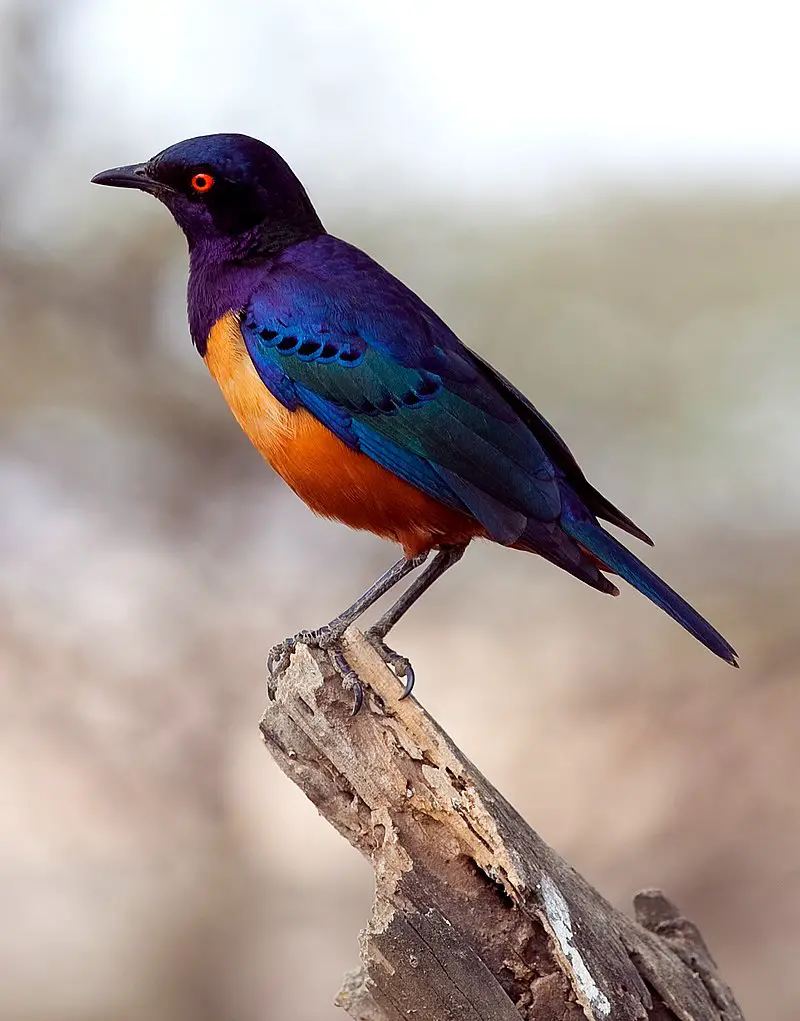
Starlings are small to medium-sized birds belonging to the Sturnidae family. They have a unique iridescent plumage, making them popularly known as glossy starlings in Africa and mynas in Asia.
Starlings inhabit Europe, Asia and Africa; some species even migrate between continents for food or better climates.
These birds form large flocks of up to thousands at a time during their migration periods, creating spectacular visual displays while they soar through the sky.
Besides being beautiful creatures, starlings can also imitate sounds such as human speech – an impressive feat that has been documented by many ornithologists over the years.Scientific classification:
| Kingdom | Animalia |
| Phylum | Chordata |
| Class | Aves |
| Order | Passeriformes |
| Suborder | Passeri |
| Family | Sturnidae Rafinesque, 1815 |
Also Featured In: Birds of United Kingdom, Hong Kong Birds You Need to See
29. Tit
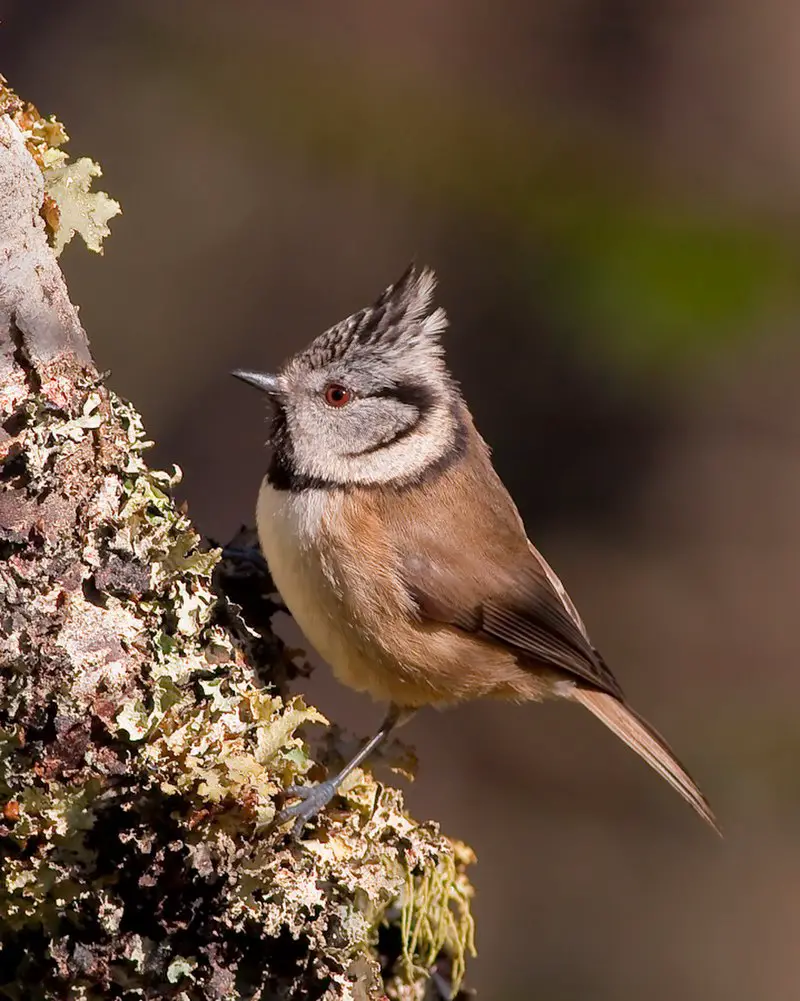
Tit birds are small passerine birds belonging to the family Paridae, found mainly in Northern Hemisphere and Africa.
These active little birds can be seen singing sweet songs throughout the day or scavenging for food at feeders.
They have short, stout bills which they use to crack open seeds and nuts with ease. Tit species range from chickadees to titmice; all of them sport a distinctive black head cap that stands out against their pale grey bodies.
Their bright eyes allow them excellent vision while searching for food – even on gloomy days when other predators may not see as well.
Tits are an important part of any healthy ecosystem and provide many ecological services such as insect control and seed dispersal.Scientific classification:
| Kingdom | Animalia |
| Phylum | Chordata |
| Class | Aves |
| Order | Passeriformes |
| Infraorder | Passerida |
| Family | Paridae Vigors, 1825 |
Also Featured In: Willows Birds Around You, Italian Birds You Should Know
30. Red-Breasted Nuthatch
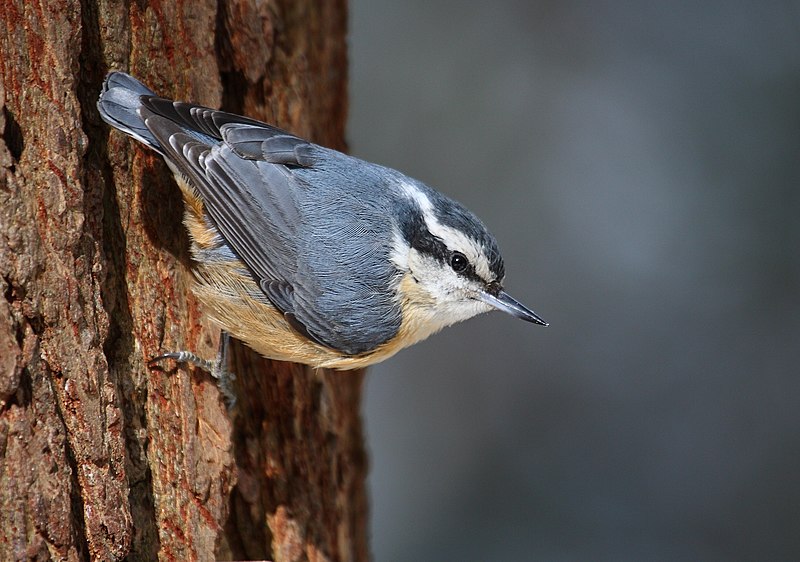
The Red-breasted Nuthatch is a beautiful and vocal songbird that can be found in coniferous forests across Canada, Alaska, the northeastern United States and western US.
This small bird has blue-grey upperparts with cinnamon underparts, a white throat and face with black eye stripe, straight grey bill and black crown.
Its call sounds like a tin trumpet; it’s high-pitched yet nasal.
During mating season they form monogamous pairs to build their nest near tree trunks or branches at low heights off the ground where they lay 2 – 8 eggs at once.
They are very active little birds who love clinging to trees while searching for insect larvae or seeds within the bark of trees which helps control pest populations.Scientific classification:
| Kingdom | Animalia |
| Phylum | Chordata |
| Class | Aves |
| Order | Passeriformes |
| Family | Sittidae |
| Genus | Sitta |
| Species | S. canadensis |
Also Featured In: Common Birds in Canada, Acadia National Park Birds
31. Cardinal
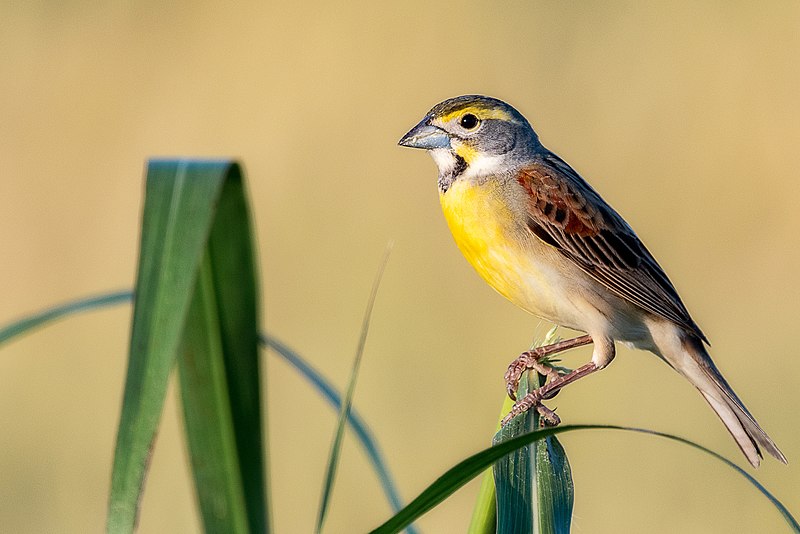
Cardinalidae is a family of passerine birds endemic to the New World that includes cardinals, grosbeaks and buntings.
This large group has great diversity in its members which range from tanager-like Piranga to warbler-like Granatellus.
They are usually distinguished by their bright plumage with reds, oranges and yellows being common among them.
Their strong bills enable them to feed on seeds, fruits and insects as well as other small prey items like lizards or frogs depending upon species.
Cardinals also have loud calls often used for territorial defense and courtship purposes while some can even imitate sounds made by other animals.
These adaptable birds inhabit a variety of habitats across North America making them an important part of many ecosystems there.Scientific classification:
| Kingdom | Animalia |
| Phylum | Chordata |
| Class | Aves |
| Order | Passeriformes |
| Superfamily | Emberizoidea |
| Family | Cardinalidae Ridgway, 1901 |
Also Featured In: Spiritual Birds, Mountain Birds You Should Know
32. Snowy Owl
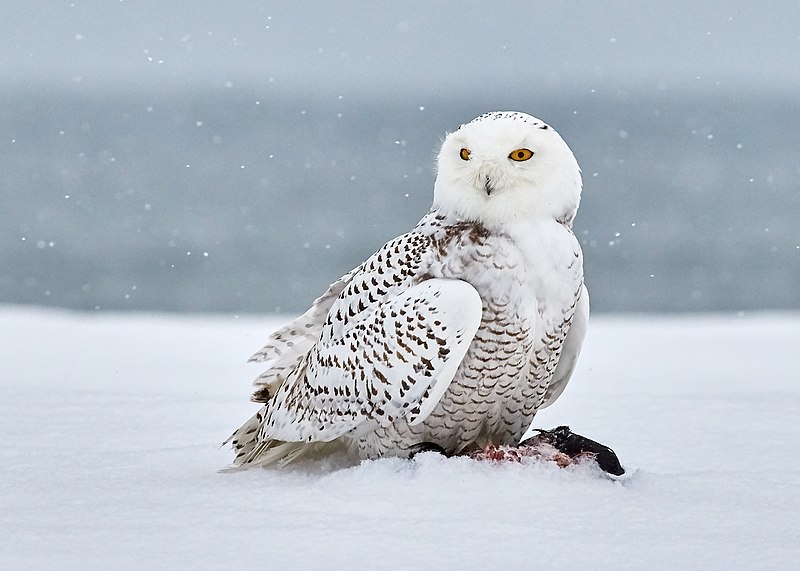
The Snowy Owl is an impressive bird of prey native to both the North American and Palearctic Arctic regions.
It has a unique white plumage that helps it blend in with its snowy tundra habitat, as well as several adaptations that make it suitable for life in cold climates.
These include thick feathers which insulate their bodies from frigid temperatures, large eyes adapted for hunting during long winter nights, and talons designed for gripping slippery surfaces such as ice or snow.
This majestic owl will soar high above its territory searching for food before gliding back down again to perch atop rocks or trees.
The Snowy Owl truly stands out amongst other birds of prey – an iconic symbol of the beauty and mystery of the north.Scientific classification:
| Kingdom | Animalia |
| Phylum | Chordata |
| Class | Aves |
| Order | Strigiformes |
| Family | Strigidae |
| Genus | Bubo |
| Species | B. scandiacus |
Also Featured In: Tundra Birds, Birds of Taiga
33. White-Throated Sparrow
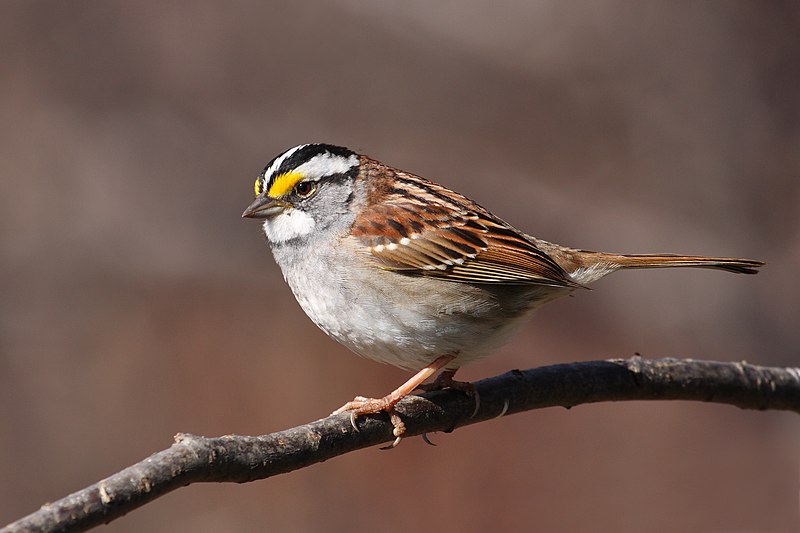
The White-throated Sparrow is a small passerine bird of the New World sparrow family Passerellidae.
It has distinctive yellow and black stripes on its head, white throat and chest with grey back and wings, along with light brown legs.
The scientific name “Zonotrichia albicollis” comes from Ancient Greek for ‘band’ (ζώνη) referring to its distinctive striped crown, and Latin for ‘white neck’ (albus collum).
These birds are usually found in wooded areas such as coniferous forests or deciduous habitats in North America where they feed mainly on insects during summer months; transitioning to seeds during winter.
They build their nests near ground level using grasses, twigs or moss lined with feathers.
White-throated Sparrows may be solitary but also form flocks when migrating southward each fall season which typically occurs over mid-late October through November depending on location within range.Scientific classification:
| Kingdom | Animalia |
| Phylum | Chordata |
| Class | Aves |
| Order | Passeriformes |
| Family | Passerellidae |
| Genus | Zonotrichia |
| Species | Z. albicollis |
Also Featured In: Yellow Georgia Birds, Large New Hampshire Birds
34. Cyanocitta
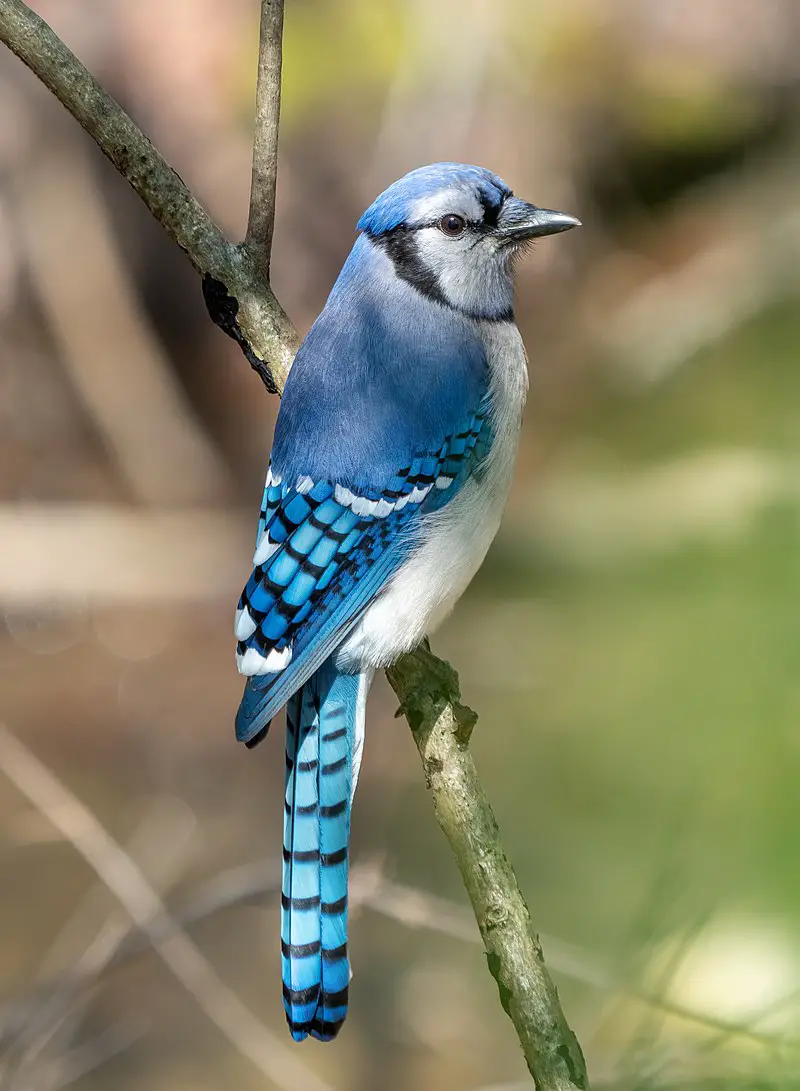
Cyanocitta is a genus of birds belonging to the Corvidae family, which includes crows, jays and magpies. It was established in 1845 by Hugh Edwin Strickland and consists of four species: Steller’s Jay, Blue Jay, Clark’s Nutcracker and Gray Jay.
The name Cyanocitta comes from two Greek words – kuanos meaning “dark blue” and kitta meaning “jay” – which perfectly describes these colourful birds with their bright feathers that range from deep blues to light grays.
They are also known for being very intelligent animals as they can solve complex problems such as opening boxes or finding food hidden under rocks.
As well as this impressive ability, Cyanocittas have been known to mimic human voices.Scientific classification:
| Kingdom | Animalia |
| Phylum | Chordata |
| Class | Aves |
| Order | Passeriformes |
| Family | Corvidae |
| Genus | Cyanocitta Strickland, 1845 |
Also Featured In: Common Blue Birds of United States of America,
35. Pileated Woodpecker
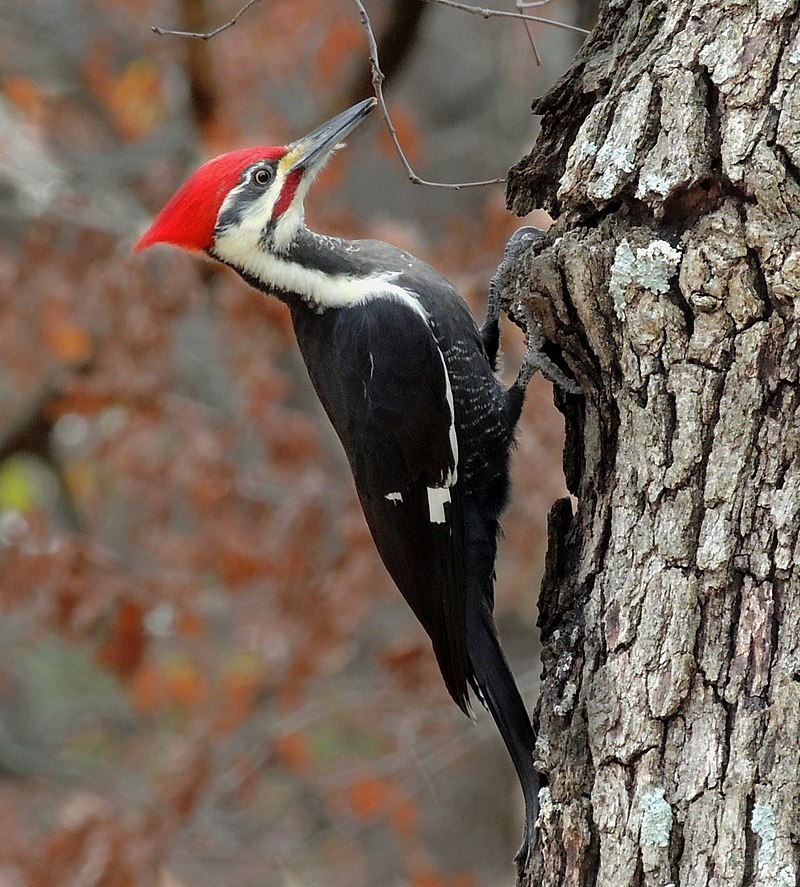
The pileated woodpecker is a large, majestic bird native to North America.
Its striking black plumage and red crest make it an unmistakeable sight in the forest canopy of deciduous forests across eastern North America, Great Lakes region, Canada’s boreal forests, and parts of the Pacific Coast.
It is one of the largest woodpeckers in North America: larger than any other confirmed species except for perhaps its relative; the ivory-billed woodpecker.
Insectivorous by nature, this stunning creature can be seen pecking away at tree trunks searching for food or making nest cavities – all with remarkable skill.
The pileated woodpecker truly stands out as a symbol of beauty and resilience amongst our avian wildlife.Scientific classification:
| Kingdom | Animalia |
| Phylum | Chordata |
| Class | Aves |
| Order | Piciformes |
| Family | Picidae |
| Genus | Dryocopus |
| Species | D. pileatus |
Also Featured In: Red Birds You’ll See in Oklahoma, Red Birds You’ll Commonly Found in Texas
36. Purple Finch
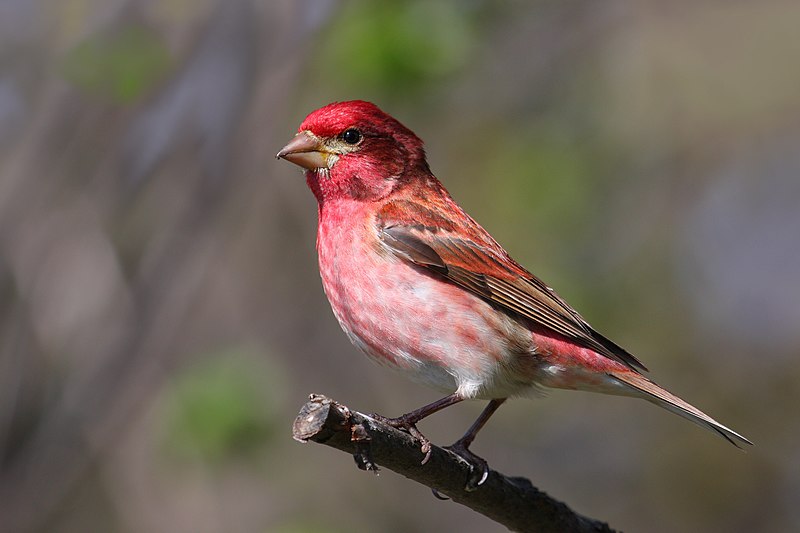
The Purple Finch is a species of finch from North America, belonging to the Fringillidae family.
It’s also known as an “American Rosefinch” due to its resemblance in color and size to some European rosefinches.
Their plumage ranges from pinkish-purple on their heads and wings, with a light brown underside.
They are small birds that measure about 5-6 inches long with short thin beaks for eating seeds and insects.
In addition, they have thick round bodies which help them stay warm during cold winters in the northern parts of their range.
The Purple Finch has adapted well over time making it easier for them to survive even though there are increasing threats posed by humans such as deforestation or habitat destruction caused by development projects near their habitats.Scientific classification:
| Kingdom | Animalia |
| Phylum | Chordata |
| Class | Aves |
| Order | Passeriformes |
| Family | Fringillidae |
| Subfamily | Carduelinae |
| Genus | Haemorhous |
| Species | H. purpureus |
Also Featured In: Georgia Birds, Magenta Birds You Didn’t Know
37. Snow Bunting
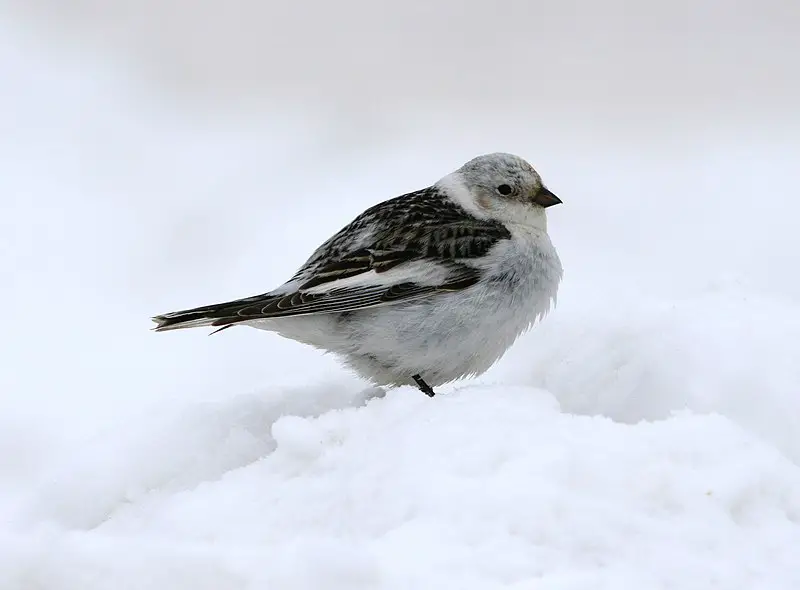
The snow bunting is a small and colourful passerine bird found in the Arctic regions of the northern hemisphere.
With its bright white feathers, black markings on its wings and tail, it stands out amongst other birds that inhabit these cold climates.
This species has adapted well to surviving in this harsh environment; they nest under boulders or rocks so their eggs are shielded from predators and blizzards alike.
They feed mainly on insects during summer months but switch to seeds when winter arrives as they seek food sources which will not freeze over with ice.
The snow bunting is an important part of the local ecosystem due to providing sustenance for larger animals such as foxes and owls who rely upon them for survival throughout wintertime.Scientific classification:
| Kingdom | Animalia |
| Phylum | Chordata |
| Class | Aves |
| Order | Passeriformes |
| Family | Calcariidae |
| Genus | Plectrophenax |
| Species | P. nivalis |
Also Featured In: Iceland birds, Birds Found in Hungary
38. Mountain Chickadee
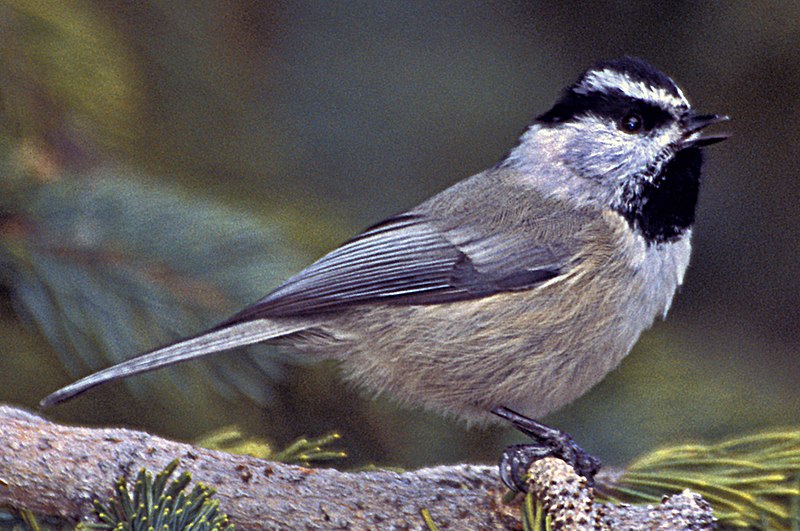
The Mountain Chickadee is a small songbird in the tit family Paridae. It’s distinct features include its black cap and bib, white cheeks, gray back and buffy underparts.
This bird was named after an American naturalist called William Gambel.
Recent studies have suggested that this species should be separated from other tits due to differences in their mitochondrial DNA cytochrome B sequence data as well as physical characteristics such as morphology.
They inhabit coniferous forests of North America between Alaska’s Aleutian Islands all the way down to northern Mexico.
The diet of these birds consist mainly on insects but they are also known to eat seeds and berries at times.
These active little birds often join mixed-species foraging flocks during wintertime with other chickadees, nuthatches or kinglets which helps them survive colder climates by pooling resources together when food sources become sparse.Scientific classification:
| Kingdom | Animalia |
| Phylum | Chordata |
| Class | Aves |
| Order | Passeriformes |
| Family | Paridae |
| Genus | Poecile |
| Species | P. gambeli |
Also Featured In: Chickadees Birds, Birds That Live in Colorado
39. Common Redpoll
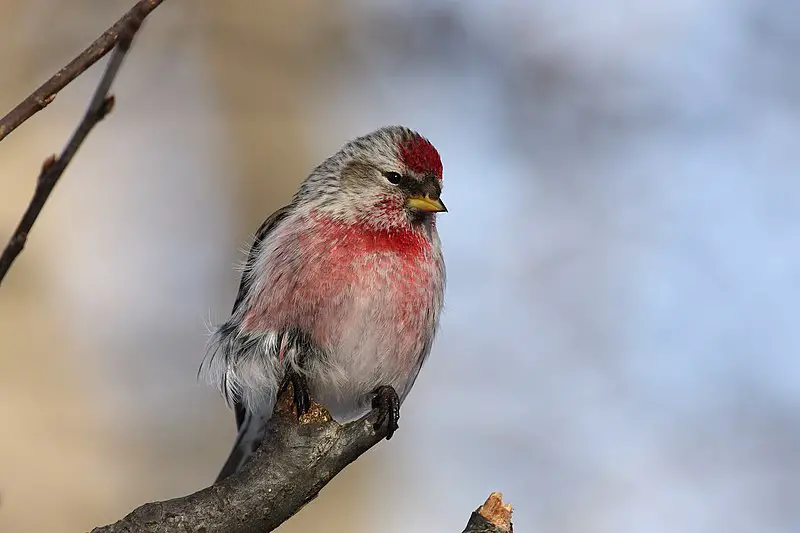
The Common Redpoll is a species of bird belonging to the finch family. It has an orange-red crown, white breast and grey back with two black stripes running down either side.
Its wings are barred in browns and its tail feathers have a grayish tinge at their tips. The redpoll breeds mainly south from Arctic regions in habitats that contain shrubs or thickets.
First classified by Linnaeus in 1758 under the binomial name Fringilla flammea, it’s genus Acanthis originates from Ancient Greek akantha meaning “thorn” or “prickle”.
This small yet colourful bird feeds mainly on seeds such as thistles during summer months but switches over to birch catkins when winter arrives – making them a common sight throughout much of North America and Eurasia.Scientific classification:
| Kingdom | Animalia |
| Phylum | Chordata |
| Class | Aves |
| Order | Passeriformes |
| Family | Fringillidae |
| Subfamily | Carduelinae |
| Genus | Acanthis |
| Species | A. flammea |
Also Featured In: Finches Species, New Hampshire Birds You Should Know
40. Pine Siskin
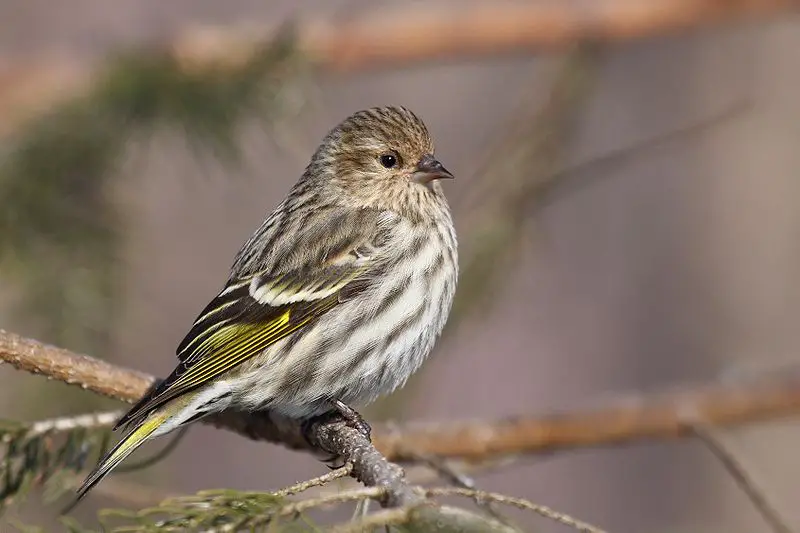
The Pine Siskin is a small bird from the finch family, primarily found in North America. It has an irregular migratory range and was first described by American ornithologist Alexander Wilson in 1810.
The species gets its name pinus, which means “pine-tree” in Latin, due to its frequent presence near coniferous trees.
Pine siskins are known for their yellow wing bars and streaked chests as well as their perky mannerisms when perched on branches or flying around looking for food during colder months.
They feed mostly on seeds of weeds, grasses and other plants but can also be seen consuming insects at times during summertime nesting season.
Its loud calls often alert nearby birds of potential danger while they nest high up among pine tree limbs where predators cannot reach them easily.Scientific classification:
| Kingdom | Animalia |
| Phylum | Chordata |
| Class | Aves |
| Order | Passeriformes |
| Family | Fringillidae |
| Subfamily | Carduelinae |
| Genus | Spinus |
| Species | S. pinus |
Also Featured In: Autumn Birds You Should Know, Common Birds in Saskatchewan
41. Evening Grosbeak
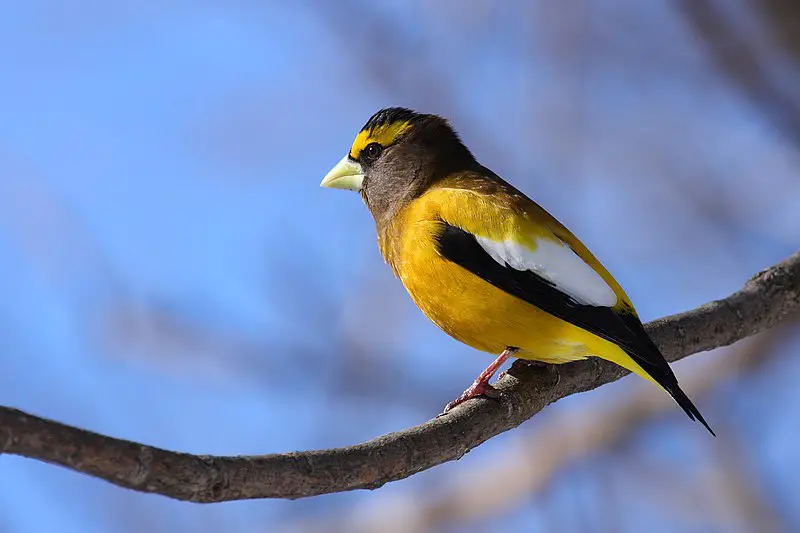
The Evening Grosbeak (Hesperiphona vespertina) is a beautiful passerine bird in the finch family Fringillidae native to North America.
It has an impressive wingspan of up to 20 inches and its plumage is mostly black, yellow or grey with distinctive white patches on each side of its head.
Its diet consists mainly of seeds and other plant matter as well as small insects, fruit and berries when available.
The male’s song is loud and melodic which can be heard from some distance away during breeding season making it a popular species for avid backyard birders.
The Evening Grosbeak typically nests high in coniferous trees where they build cup-shaped structures lined with feathers or grass that provide protection against predators.
Overall this species makes an excellent addition to any backyard aviary.Scientific classification:
| Kingdom | Animalia |
| Phylum | Chordata |
| Class | Aves |
| Order | Passeriformes |
| Family | Fringillidae |
| Subfamily | Carduelinae |
| Genus | Hesperiphona |
| Species | H. vespertina |
Also Featured In: Common Birds in Alberta, Birds that Live in Mississippi
42. American Tree Sparrow
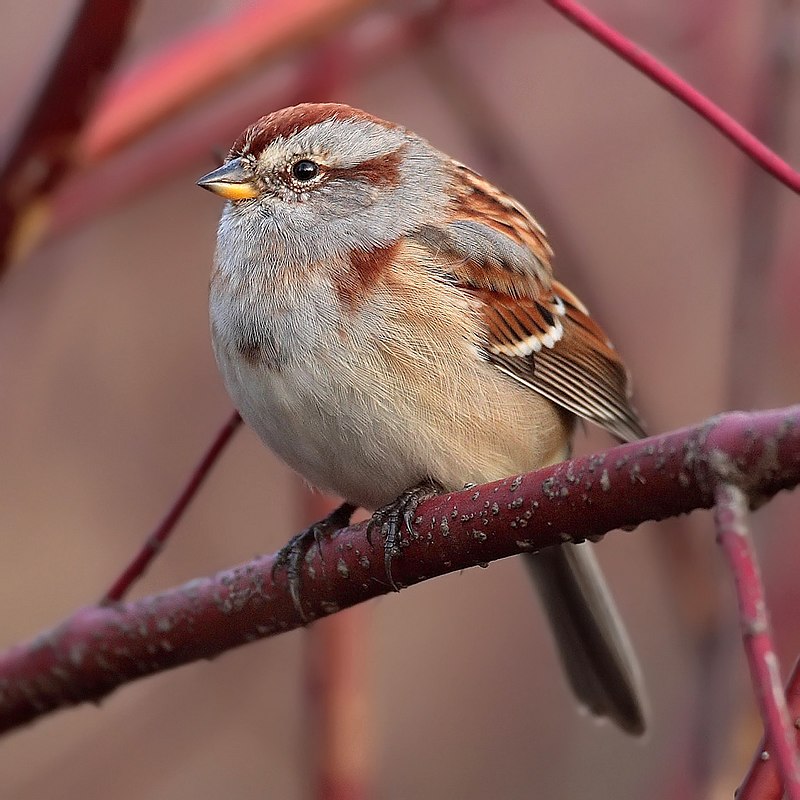
The American tree sparrow, also known as the winter sparrow, is a medium-sized New World bird. It has an attractive rusty cap and grey underparts with a small dark spot on its chest.
Its back is rust colored and striped with lighter shades of brown while its wings have various shades of browns.
These birds are usually found in open areas such as grasslands or marshland during spring migration and can form large flocks when seeking food sources like seeds, insects or berries.
They nest in shrubs or trees near water sources but rarely do so far away from human settlements due to their dependence on supplementary foods provided by humans.
The American Tree Sparrow is a delightful sight for any nature enthusiast.Scientific classification:
| Kingdom | Animalia |
| Phylum | Chordata |
| Class | Aves |
| Order | Passeriformes |
| Family | Passerellidae |
| Genus | Spizelloides Slager & Klicka, 2014 |
| Species | S. arborea |
Also Featured In: Sparrows Species, Birds Commonly Found in New York
43. Winter Wren
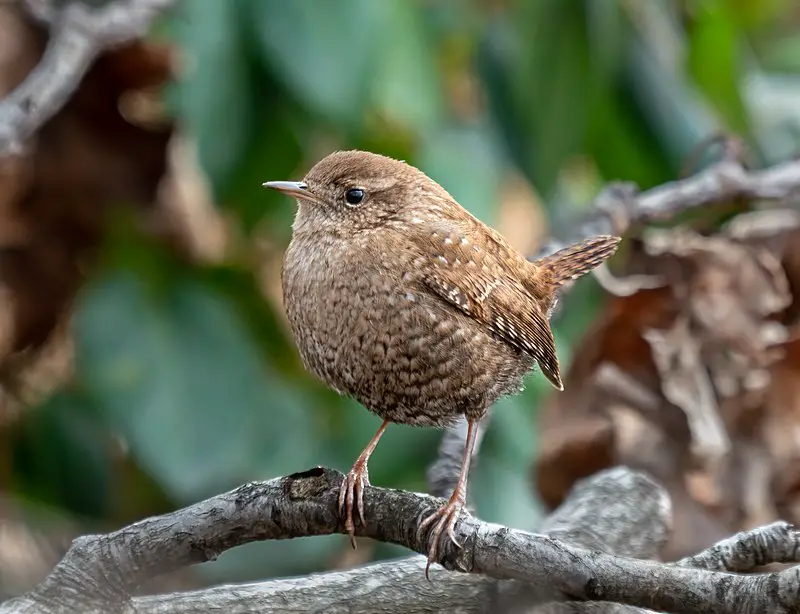
The Winter Wren is a tiny bird belonging to the New World wren family. It can be found in North America, from British Columbia all the way to the Atlantic Ocean.
In winter, it migrates south and sometimes even reaches Central America. Its habitat consists mainly of coniferous forests where it builds its nest on or near ground level within dense vegetation for protection against predators.
This small songbird has a rich brown plumage with white eyebrows and buff underparts which helps them blend into their environment perfectly.
The Winter Wrens are renowned for their loud songs that they sing both day and night during breeding season; making them an integral part of any forest ecosystem.Scientific classification:
| Kingdom | Animalia |
| Phylum | Chordata |
| Class | Aves |
| Order | Passeriformes |
| Family | Troglodytidae |
| Genus | Troglodytes |
| Species | T. hiemalis |
Also Featured In: Wrens Species, North Carolina Mountain Birds
44. Golden-Crowned Kinglet
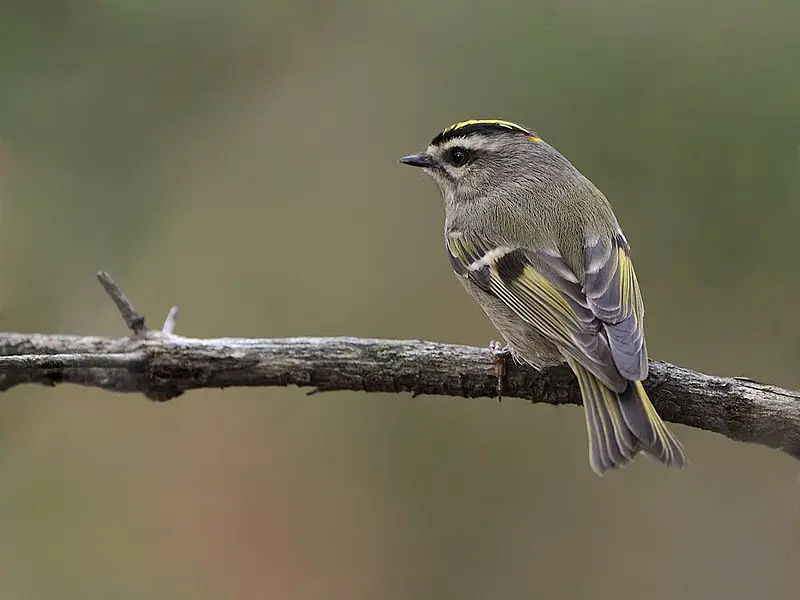
The Golden-crowned Kinglet is a small songbird native to North America. It has an olive-gray top and white underparts, with thin bills and short tails.
The most distinguishing feature of this bird is its yellow crown, surrounded by a black patch that extends through the eyes.
Males have an additional orange patch in the middle of their yellow crowns. They are active birds, often seen flitting from branch to branch as they search for insects or other food sources in trees or shrubs.
During winter months when there’s less insect prey available, Golden-crowned Kinglets will join mixed species flocks searching for berries on bushes and trees throughout forests across North America.Scientific classification:
| Kingdom | Animalia |
| Phylum | Chordata |
| Class | Aves |
| Order | Passeriformes |
| Family | Regulidae |
| Genus | Regulus |
| Species | R. satrapa |
Also Featured In: Birds that Live in Vancouver, Birds in Pacific Northwest
45. Old World Sparrows
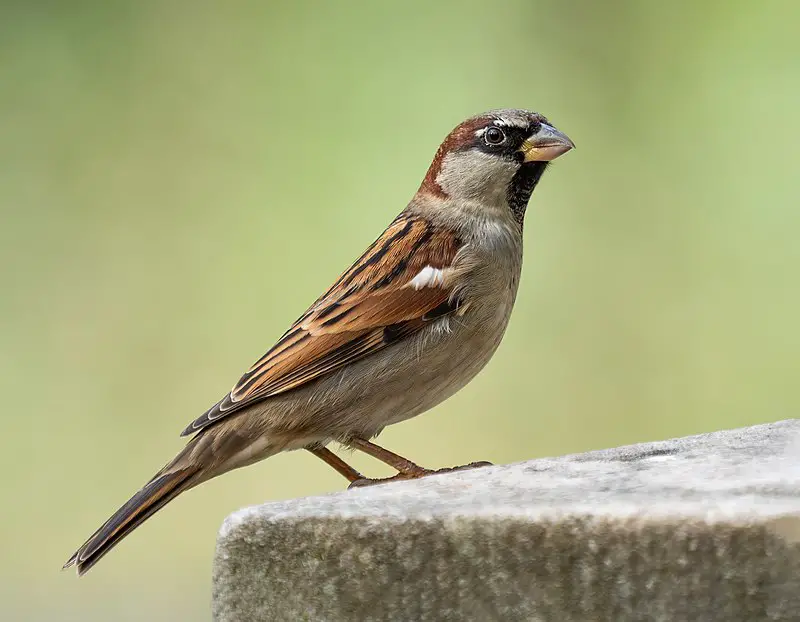
Old World sparrows are small passerine birds belonging to the family Passeridae. They are characteristically much smaller than their New World counterparts, ranging in size from 6 centimeters up to 20 centimeters depending on species.
The most common characteristics of these birds include a black or grey head and upper body with white underparts and white stripes above their eyes.
Notable features such as barring and streaking can be found across different species within this group.
Old world sparrows typically inhabit open grassland areas but have been known to nest around human dwellings near urban settings as well, making them easily recognizable by many people all over the globe.Scientific classification:
| Kingdom | Animalia |
| Phylum | Chordata |
| Class | Aves |
| Order | Passeriformes |
| Suborder | Passeri |
| Infraorder | Passerida |
| Superfamily | Passeroidea |
| Family | Passeridae Rafinesque, 1815 |
Also Featured In: Alaska Birds, Famous Paintings Birds
46. Redpolls
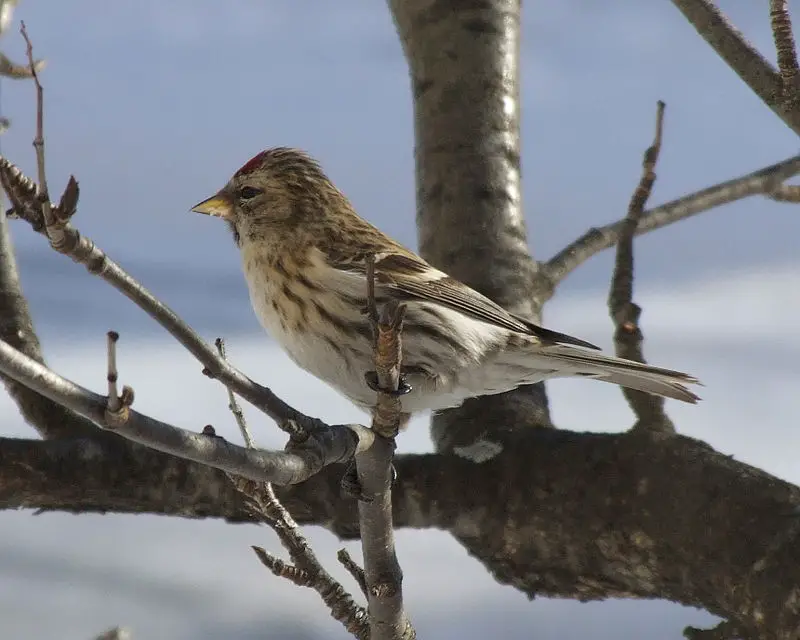
Redpolls are small passerine birds belonging to the finch family. They can be identified by their distinctive red markings on their heads and have a wingspan of 10-14 cm (4-5 in).
Redpolls live mainly in northern regions but may migrate south during winter months for food.
Their diet consists mostly of seeds and insects, which they use as an energy source for sustained flight.
The genus name Acanthis is derived from Ancient Greek meaning “small bird”. These birds are often seen flitting among conifers, grasslands or swamps collecting food with ease due to their light weight and maneuverability.
Redpolls make pleasant chirping sounds while feeding making them popular backyard visitors throughout North America.Scientific classification:
| Kingdom | Animalia |
| Phylum | Chordata |
| Class | Aves |
| Order | Passeriformes |
| Family | Fringillidae |
| Subfamily | Carduelinae |
| Genus | Acanthis Borkhausen, 1797 |
47. Juncos
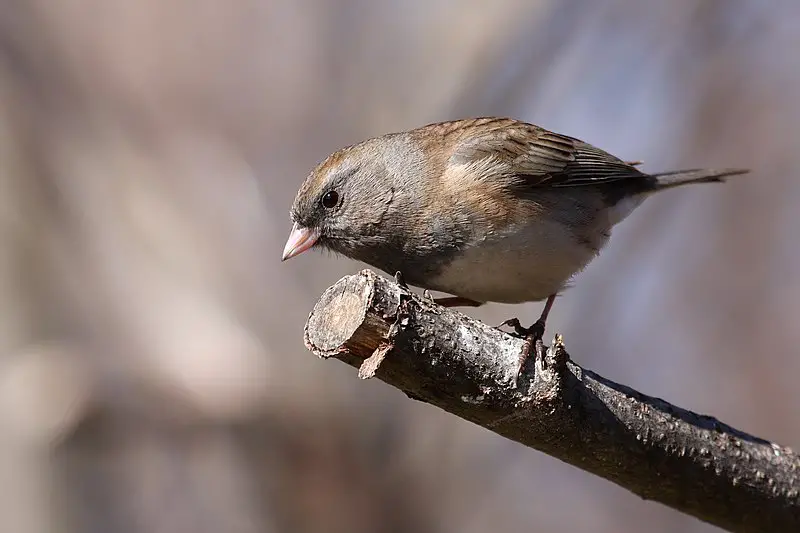
Juncos are small North American birds belonging to the Passerellidae family. Although their name appears to have Spanish origins, they rarely inhabit areas with rush plants.
They vary in size and color depending on species, but generally have dark heads and greyish brown bodies.
In winter months, Juncos flock together to form huge roosting groups or migrate southwards for warmer climates.
These hardy little creatures can often be seen hopping around gardens scavenging for food during snowstorms.
Their diet consists of a variety of items including seeds, berries and insects – making them popular garden visitors year round.Scientific classification:
| Kingdom | Animalia |
| Phylum | Chordata |
| Class | Aves |
| Order | Passeriformes |
| Family | Passerellidae |
| Genus | Junco Wagler, 1831 |
Also Featured In: birds of Minnesota, Birds You’ll Find in Vancouver Island
48. Rosefinches
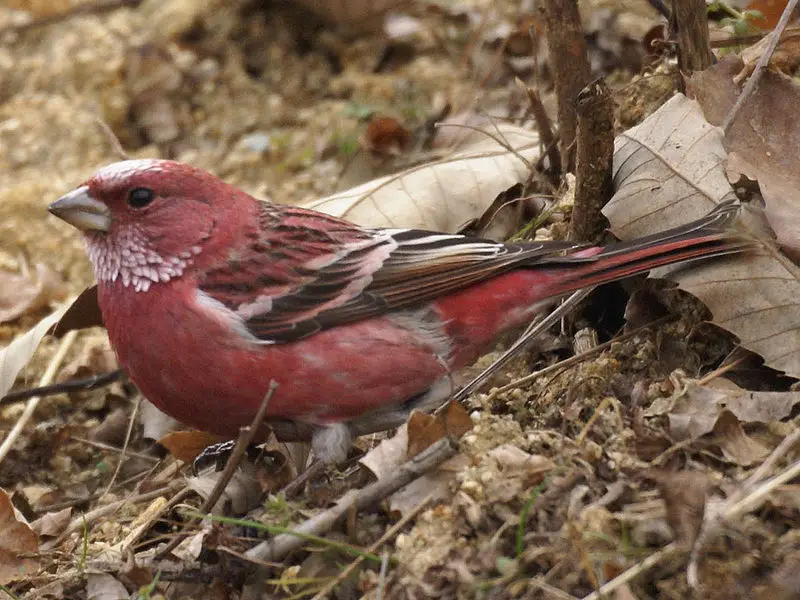
Rosefinches are a genus of passerine birds in the finch family Fringillidae known for their shades of red plumage. They have adapted to most habitats, including urban areas and can be found throughout Eurasia.
Rosefinches typically feed on small seeds, buds, flowers and insects. Their diet is supplemented with fruits such as pomegranate or rose hips during cold winters when natural food sources become scarce.
These beautiful little birds also form large flocks which provide protection from predators while they search for food together.
The Carpodacus rosefinch is an important species to many cultures because it has been kept as a pet by humans since ancient times due to its attractive colors and friendly nature compared to other wild bird species.
Overall these delightful creatures make wonderful companions that bring joy not only through sight but sound too.Scientific classification:
| Kingdom | Animalia |
| Phylum | Chordata |
| Class | Aves |
| Order | Passeriformes |
| Family | Fringillidae |
| Subfamily | Carduelinae |
| Genus | Carpodacus Kaup, 1829 |
Also Featured In: birds of purple,
49. Waxwing
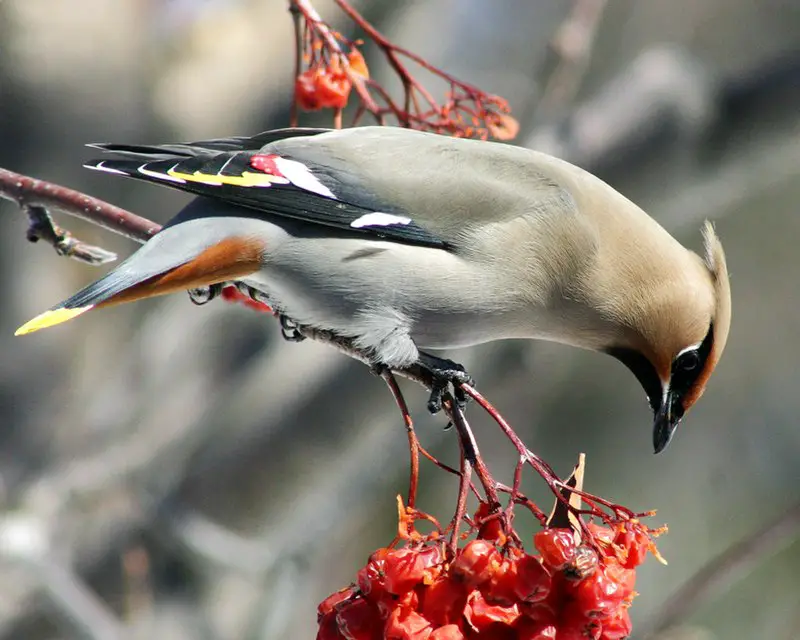
The Waxwing bird belongs to the Bombycilla genus and is named after its distinctive smooth plumage. With a pinkish-brown and pale grey appearance, these birds have a black and white eyestripe, crest, square-cut tail, and pointed wings.
The unique feature of red-tipped wing feathers is what gives these birds their name. They are considered passerine birds and have many feathers that are not individually visible, creating a smooth appearance.
The Waxwing’s diet mainly consists of berries and fruit, and they are skilled at catching insects in flight as well.
These beautiful birds are known for their gentle demeanor and often travel together in large flocks, making a beautiful sight in flight.
Overall, the Waxwing is a fascinating bird with striking features and gentle nature.Scientific classification:
| Kingdom | Animalia |
| Phylum | Chordata |
| Class | Aves |
| Order | Passeriformes |
| Superfamily | Bombycilloidea |
| Family | Bombycillidae Swainson, 1831 |
| Genus | Bombycilla Vieillot, 1808 |
50. Bohemian Waxwing
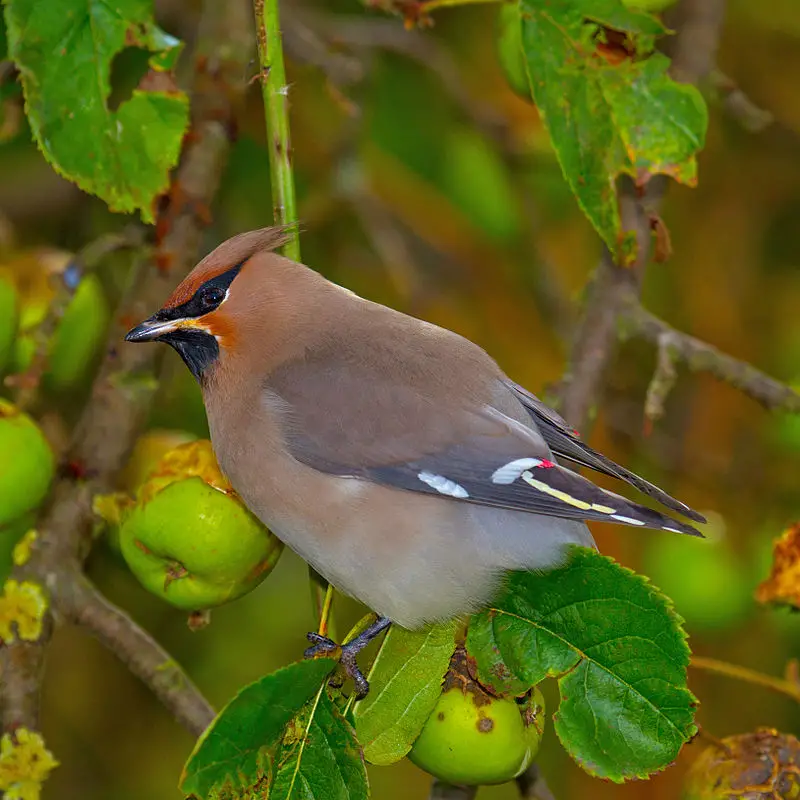
The Bohemian waxwing is a small bird native to the northern forests of the Palearctic and North America. Its plumage is mainly buff-grey, and it has black facial markings and a pointed crest.
The wings of this bird are patterned with white and bright yellow, with some feather tips being red and waxy in appearance.
The species is also sometimes referred to as the waxwing due to this trait.
The Bohemian waxwing is around the same size as a starling and is known for its distinctive appearance.
While there are three subspecies of this bird, they share many physical characteristics and can be difficult to distinguish from one another without close examination.Scientific classification:
| Kingdom | Animalia |
| Phylum | Chordata |
| Class | Aves |
| Order | Passeriformes |
| Family | Bombycillidae |
| Genus | Bombycilla |
| Species | B. garrulus |
Also Featured In: Common Vermont Winter Birds, Small Birds Live in Vermont